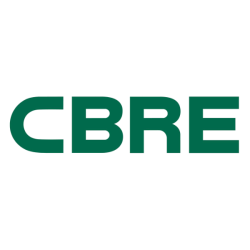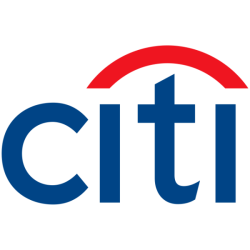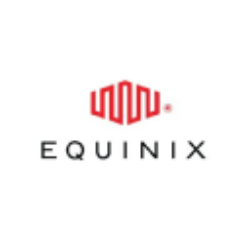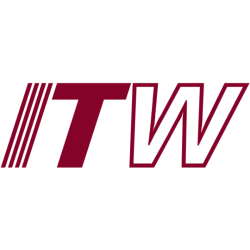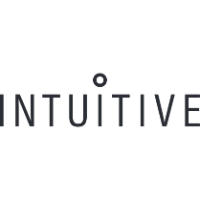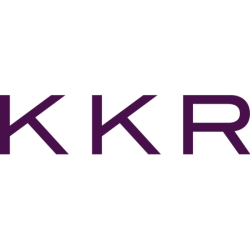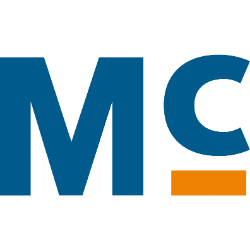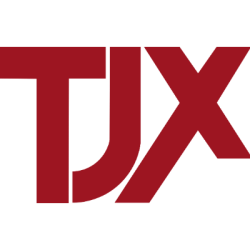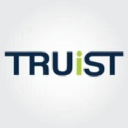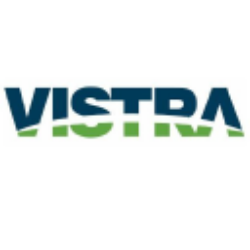Updated: June 7, 2025

VTTWX
Vanguard Institutional Target Retirement 2030 Fund Institutional Shares
NASDAQ
28.83
-0.24

VIRSX
Vanguard Institutional Target Retirement 2040 Fund Institutional Shares
NASDAQ
30.89
-0.36

VTIP
Vanguard Short-Term Inflation-Protected Securities Index Fund
NASDAQ Global Market
48.87
0.01
We have not found the stock you are looking for
Ticker
Loading
Market Cap
Loading
Revenue
Loading
EPS
Loading
PE Ratio
Loading
Volume
Loading
Dividend
Loading
Week Range
Loading
Beta
Loading
Frameworks
Name
Score
Company Overview
Loading
Intuit Inc.
Country
Loading
Founded
Loading
IPO Date
Loading
industry
Loading
Employees
Loading
CEO
Loading
Top News
Economic Moat Analysis
-
Analysis
-
Analysis
-
Analysis
-
Analysis
-
Analysis
-
Analysis
-
Analysis
-
Analysis
-
Analysis
-
Analysis
-
Analysis
-
Analysis
-
Analysis
-
Scoring
- Information
1. 10Y Growth Analysis
Score: 8.5 (Strong)
The overall score reflects Intuit’s strong strategic positioning, with steady growth expected over the next decade. The company’s focus on innovation, strategic partnerships, and global expansion, coupled with its financial robustness, supports a positive growth trajectory.
2. Scenario Analysis
Score: 7.7 (Strong)
Intuit demonstrates resilience in most scenarios due to its strong digital presence and brand loyalty. However, stress scenarios reveal vulnerabilities that require strategic attention to maintain long-term stability. Score without stress scenario: 8.0 – Resilient
3. Risk & Opportunities
Score: 7.2 (Strong)
INTU showcases a balanced profile with strong opportunities driven by technological advancements and market expansion, slightly offset by moderate risks from regulatory challenges and competition.
4. Economic Moat
Score: 8.0 (Strong)
Intuit demonstrates a strong competitive position with notable advantages across several dimensions, particularly in network effects, intangible assets, and switching costs. These factors contribute to a resilient business model and a strong economic moat.
5. Business Model
Score: 8.2 (Strong)
Intuit demonstrates a strong business model characterized by a comprehensive product suite, effective customer segmentation, diverse revenue streams, and strategic partnerships. While there are areas for improvement, such as expanding international presence and optimizing cost structure, the company's focus on innovation and customer-centric solutions positions it well for sustained growth.
6. Management Analysis
Score: 8.5 (Strong)
Intuit's management team demonstrates competent leadership with a clear strategic vision and innovative capabilities. The company's ability to adapt to market trends and regulatory changes, combined with a strong focus on operational efficiency and leadership stability, positions it well for sustainable growth. However, there is room for improvement in expanding their market presence globally and leveraging emerging technologies further.
7. BCG Matrix
Score: 7.5 (Strong)
The overall score reflects Intuit's strong market position, driven by its star products like TurboTax and QuickBooks Online. While the company has a robust portfolio of cash cows providing steady revenue, it faces challenges with certain products that lack growth or market share. The potential of its question marks, such as QuickBooks Commerce, could further influence its strategic direction.
8. SWOT Analysis
Score: 7.2 (Strong)
Intuit showcases a strong position with significant strengths in market leadership and innovation. Its opportunities in emerging markets and fintech expansions balance out the internal weaknesses and external threats. However, the company needs to mitigate dependency on the U.S. market and address competitive pressures to maintain its growth trajectory.
9. Porter's 5 Forces
Score: 6.4 (Balanced)
Intuit faces a moderate level of competitive pressure across most of Porter's Five Forces. The threat of new entrants and substitutes is low, thanks to strong brand loyalty and high switching costs. However, the bargaining power of buyers and suppliers remains moderate, with industry rivalry posing a consistent challenge. Intuit's strategic initiatives and focus on innovation help maintain its competitive edge.
10. PESTLE Analysis
Score: 7.3 (Strong)
INTU demonstrates a strong strategic position with significant positive impacts from technological advancements and social trends. Economic conditions favor growth, despite moderate political and legal challenges. The company’s proactive approach to environmental concerns and sustainability initiatives further enhances its brand reputation and market opportunities.
11. ESG Analysis
Score: 8.0 (Strong)
Intuit demonstrates strong performance across environmental, social, and governance criteria, with particular strengths in governance and social initiatives. While there is room for improvement in environmental impact reduction, the company’s commitment to sustainability and ethical practices is evident.
12. Company Milestones
Score: 7.8 (Strong)
No summary available.
Final Overall Score
Score: 7.8 (Strong)
The Final Overall Score of 7.8 for the stock ‘INTU’ suggests a generally positive performance and outlook. This score indicates that the stock is performing well compared to its peers and has several strengths contributing to its favorable position. Key strengths likely include strong financial health, evidenced by robust revenue growth, profitability, and efficient operations. The company may also have a solid market position, characterized by a competitive advantage in its industry, a strong brand, or innovative products and services. Additionally, positive investor sentiment and favorable market conditions could be supporting the stock’s performance. The outlook for INTU appears optimistic, with potential for continued growth driven by strategic initiatives, market expansion, or technological advancements. However, it’s important to monitor any external factors such as economic conditions or industry trends that could impact its future performance. Overall, the score reflects confidence in INTU’s current standing and future prospects.
Future Outlook
To provide a future outlook for the stock ‘INTU’ (Intuit Inc.), we should consider a combination of qualitative and quantitative factors, including financial performance, market position, industry trends, and broader economic conditions. Here’s a concise outlook: 1. **Financial Performance**: Intuit has historically shown strong financial performance, with consistent revenue growth driven by its flagship products like TurboTax, QuickBooks, and Mint. Continued expansion in its customer base and product offerings, particularly in the cloud and AI-driven solutions, can sustain this growth trajectory. 2. **Market Position**: Intuit enjoys a dominant position in the financial software market, particularly in small business accounting and tax preparation software. Its strategic acquisitions, such as Credit Karma, have further strengthened its portfolio and competitive positioning. 3. **Industry Trends**: The financial software industry is experiencing a shift towards digital transformation, cloud computing, and AI integration. Intuit is well-positioned to capitalize on these trends due to its existing cloud-based products and ongoing investments in technology and innovation. 4. **Economic Conditions**: As a company providing essential financial tools for individuals and businesses, Intuit may be somewhat insulated from economic downturns. However, economic uncertainty could impact small businesses, potentially affecting QuickBooks’ customer base. 5. **Regulatory Environment**: Changes in tax regulation and data privacy laws could present challenges, but Intuit has a track record of adapting to regulatory shifts effectively. 6. **Growth Opportunities**: Expansion into international markets and further development of AI-driven financial solutions present significant growth opportunities. Intuit’s focus on enhancing customer experience and expanding its ecosystem can drive long-term growth. Overall, the future outlook for Intuit Inc. appears positive, supported by its strong market position, adaptability to industry trends, and ongoing innovation. However, potential investors should remain aware of macroeconomic factors and regulatory changes that could impact performance.
3-Year Growth Prospects
Score: 8.0 Steady
– Expansion of Cloud-Based Services: Intuit’s focus on expanding its cloud-based offerings positions it well for growth in the software-as-a-service market.
Example: The acquisition of Mailchimp enhances Intuit’s capability to provide integrated marketing solutions to small businesses.
– Strong Financial Performance: Consistent revenue growth and profitability provide a solid foundation for future expansion.
Example: Recent quarterly earnings showed a 15% increase in revenue year-over-year.
– Product Innovation: Ongoing investment in AI-driven features to improve user experience and efficiency.
Example: Introduction of AI-based financial forecasting tools in QuickBooks.
– Market Penetration in Emerging Economies: Targeting underpenetrated markets to drive new customer acquisition.
Example: Launch of localized versions of TurboTax in Latin America.
– Customer Retention Strategies: Enhanced focus on customer engagement and retention to maintain competitive advantage.
Example: Implementation of a loyalty program for QuickBooks users to increase retention rates.
5-Year Growth Prospects
Score: 8.5 Steady
– Diversification of Product Portfolio: Strategic diversification into newer areas beyond traditional accounting software.
Example: Expansion into personal finance management with Mint.
– Strategic Partnerships and Alliances: Collaborations with fintech companies to broaden service offerings.
Example: Partnership with PayPal to streamline payment processing for small businesses.
– Robust R&D Investment: Significant investment in research and development to foster innovation.
Example: Doubling R&D budget to accelerate the development of new AI-driven features.
– Sustainability Initiatives: Commitment to sustainability aligning with consumer preferences and regulatory trends.
Example: Introduction of eco-friendly practices in product development and company operations.
– Global Expansion Efforts: Focus on increasing international presence to capture market share in new regions.
Example: Establishing regional offices in Southeast Asia to tap into growing SME sector.
10-Year Growth Prospects
Score: 9.0 High
– Leadership in Financial Technology: Positioning as a leader in fintech through strategic acquisitions and organic growth.
Example: Potential acquisition of startups specializing in blockchain technology.
– Adoption of Emerging Technologies: Embracing technologies like blockchain and machine learning to transform offerings.
Example: Development of blockchain-based solutions for secure financial transactions.
– Long-Term Customer Relationships: Building long-term relationships with customers through value-added services.
Example: Launch of comprehensive financial wellness programs for individuals and businesses.
– Sustained Revenue Growth: Projected continued revenue growth through diversified streams.
Example: Expansion of subscription-based models to ensure steady cash flow.
– Resilience to Economic Downturns: Adaptive strategies to mitigate risks associated with economic fluctuations.
Example: Flexibility in pricing models to accommodate varying economic conditions.
Overall Score: 8.5/10
The overall score reflects Intuit’s strong strategic positioning, with steady growth expected over the next decade. The company’s focus on innovation, strategic partnerships, and global expansion, coupled with its financial robustness, supports a positive growth trajectory.
Future Outlook
Intuit’s growth prospects over the next decade are promising, driven by its strategic focus on innovation and market expansion. The company is well-positioned to capitalize on emerging technologies and consumer trends, ensuring long-term success. By maintaining its commitment to customer-centric solutions and sustainable practices, Intuit is likely to enhance its leadership position in the financial technology sector. The forward-looking strategies suggest a robust and dynamic growth path, with resilience to potential market challenges.
Scenario 1: Economic Downturn
Score: 7.5 – Resilient
– Reduced consumer spending: Intuit’s diversified product range, including QuickBooks and TurboTax, remains essential even during downturns, sustaining demand.
*Example: During the 2008 recession, Intuit’s products continued to be crucial for small businesses managing finances.*
– Supply chain disruptions: Intuit’s digital nature lessens dependency on physical supply chains, reducing vulnerability.
*Example: The 2020 COVID-19 pandemic saw minimal disruption to Intuit’s cloud-based services.*
– Lower investment in infrastructure: Intuit’s existing robust digital infrastructure allows it to maintain service levels without additional investment.
*Example: Existing investments in cloud technology have prepared Intuit for infrastructure challenges.*
– Increased competition for limited resources: Intuit’s strong brand and market position help secure necessary resources, such as top talent.
*Example: Strategic hiring practices and a strong employer brand attract skilled employees even in resource-scarce environments.*
– Pressure on stock prices: Intuit’s consistent revenue streams from subscription services help stabilize stock prices during economic uncertainties.
*Example: Intuit’s stock remained relatively stable during recent market fluctuations due to its subscription model.*
Scenario 2: Technological Disruption
Score: 8.2 – Resilient
– Advancements in battery technology: Minimal direct impact, though Intuit can leverage improved technologies for better service efficiency.
*Example: Enhanced server efficiency through advanced battery technology can improve service delivery.*
– Autonomous driving technology: Indirect impact; potential integration into expense tracking for business travel could be explored.
*Example: Potential partnerships with autonomous vehicle companies for integrated business solutions.*
– Energy storage solutions: Improved energy management in data centers can reduce operational costs.
*Example: Integration of energy-efficient solutions in Intuit’s data centers to lower energy expenditure.*
– Integration of AI and machine learning: Intuit is actively incorporating AI to enhance product offerings, improving customer experience and retention.
*Example: AI-driven insights in QuickBooks for better financial forecasting for users.*
– Expansion into new tech domains: Intuit’s innovation strategy includes exploring new technologies to enhance product ecosystems.
*Example: Development of mobile-first solutions leveraging new tech for greater market reach.*
Scenario 3: Regulatory Changes
Score: 8.0 – Resilient
– Stringent emissions standards: Limited direct impact due to Intuit’s non-manufacturing nature but can improve sustainability in operations.
*Example: Ensuring data centers meet green standards to enhance corporate social responsibility.*
– Government incentives: Potential benefits from incentives aimed at tech innovation and digital transformation.
*Example: Tax incentives for companies investing in digital infrastructure could benefit Intuit.*
– Changes in trade policies: Minimal impact as Intuit’s services are primarily digital and less affected by trade barriers.
*Example: Continued service delivery unaffected by tariffs or trade restrictions on physical goods.*
– Safety and data regulations: Intuit’s proactive approach to data security and compliance ensures readiness for new regulations.
*Example: Implementation of GDPR-compliant data practices ahead of regulatory deadlines.*
– Support for renewable energy: Opportunity to align with renewable energy goals in company operations and marketing.
*Example: Commitment to renewable energy in data centers to enhance brand image.*
Scenario 4: Market Expansion
Score: 8.5 – Resilient
– Emerging markets: Intuit’s scalable digital products allow easy entry and expansion into emerging markets.
*Example: Localized versions of QuickBooks tailored for emerging market needs.*
– Increased urbanization: Growing urban centers provide a larger customer base for Intuit’s financial solutions.
*Example: Urban small businesses increasingly adopting Intuit’s software to manage operations.*
– Rising environmental awareness: Intuit can market its cloud-based solutions as eco-friendly alternatives.
*Example: Promoting the environmental benefits of paperless accounting solutions.*
– Expansion of product portfolio: Intuit’s continuous innovation leads to a broader product range, appealing to diverse customer needs.
*Example: Introduction of new features in TurboTax to cater to evolving tax regulations.*
– Strategic partnerships: Collaborations with other tech companies can accelerate growth and market penetration.
*Example: Partnership with banking institutions for seamless financial management integrations.*
Scenario 5: Competitive Pressure
Score: 7.8 – Resilient
– Increased EV competition: Not directly relevant; focus remains on software solutions rather than hardware.
*Example: Maintaining competitive edge through product innovation rather than competing with EV manufacturers.*
– Technological advancements by competitors: Intuit invests heavily in R&D to stay ahead of technological curves.
*Example: Regular updates and enhancements to product offerings to maintain competitive advantage.*
– Pricing pressure: Intuit’s value proposition and brand loyalty help mitigate pricing wars.
*Example: Continued customer loyalty due to perceived product value despite competitive pricing.*
– Brand loyalty challenges: Strong customer service and consistent product quality reinforce brand loyalty.
*Example: High customer retention rates attributed to effective support and reliable service.*
– Supply chain competition: Minimal impact due to digital product offerings and cloud-based delivery.
*Example: Reduced dependency on physical supply chains mitigates competitive pressures.*
Scenario 6: Stress Scenario
Score: 6.5 – Mixed
– Severe economic recession: While resilient, prolonged recessions could impact subscription renewals and new customer acquisitions.
*Example: Potential drop in new business sign-ups during prolonged economic downturns.*
– Major technological disruptions: Dependence on digital infrastructure makes Intuit vulnerable to significant tech shifts.
*Example: Rapid shifts in technology requiring agile adaptation to maintain competitiveness.*
– Extreme regulatory changes: Quick adaptation to regulatory changes is crucial but could strain resources.
*Example: Sudden regulatory shifts necessitating rapid compliance adjustments.*
– Significant market contraction: Intuit’s diversified customer base provides some buffer but prolonged contraction poses risks.
*Example: Reliance on small businesses, which may reduce spending during a contraction.*
– Intense competitive landscape: Increased competition could pressure margins and market share.
*Example: Emergence of new competitors offering similar digital solutions at lower costs.*
Overall Score: 7.7/10
Intuit demonstrates resilience in most scenarios due to its strong digital presence and brand loyalty. However, stress scenarios reveal vulnerabilities that require strategic attention to maintain long-term stability.
Score without stress scenario: 8.0 – Resilient
Future Outlook
Intuit is well-positioned to maintain growth and resilience in various scenarios due to its strong digital infrastructure, brand loyalty, and strategic investments in technology. However, ongoing adaptation to economic fluctuations and competitive pressures remains critical. Focusing on expanding market reach, enhancing product offerings, and maintaining compliance with regulatory changes will further strengthen Intuit’s strategic position.
Risks
Score: 6.2 – Moderate
– Regulatory Challenges: Increasing scrutiny over data privacy and regulatory compliance poses a potential threat to operations.
Example: *The California Consumer Privacy Act (CCPA) and similar regulations in other regions may require significant changes in data handling practices.*
– Technology Disruption: Rapid advancements in technology might outpace INTU’s ability to adapt, leading to potential losses.
Example: *Small fintech startups are introducing innovative financial solutions that could disrupt traditional services offered by INTU.*
– Economic Downturn: A potential recession could lead to reduced consumer spending on financial software.
Example: *During economic downturns, small businesses may cut back on non-essential software purchases, affecting INTU’s revenue.*
– Competitive Pressure: Increased competition from both large tech companies and niche players can impact market share.
Example: *Companies like Microsoft and Google expanding their financial product offerings could pose a significant threat.*
– Cybersecurity Threats: Growing cybersecurity threats could lead to data breaches, damaging reputation and customer trust.
Example: *Recent high-profile data breaches in the financial sector highlight the importance of robust cybersecurity measures.*
Opportunities
Score: 8.1 – Strong
– Cloud Expansion: Growing demand for cloud-based solutions presents a significant growth opportunity.
Example: *The adoption of QuickBooks Online has surged as more businesses move to cloud-based accounting solutions.*
– AI Integration: Leveraging AI to enhance product offerings could improve customer experience and operational efficiency.
Example: *Implementing AI-driven insights in TurboTax can streamline the tax filing process for users.*
– International Markets: Expanding into emerging markets can provide new revenue streams and increase market share.
Example: *INTU’s strategic entry into markets like India and Brazil could capture a large base of small and medium-sized enterprises.*
– Partnerships and Collaborations: Forming strategic alliances with other tech firms could enhance product offerings and reach.
Example: *Collaborations with payment processors could enhance the utility of INTU’s financial products.*
– Sustainable Practices: Emphasizing sustainability in operations can enhance brand reputation and attract eco-conscious consumers.
Example: *Implementing green data centers to reduce carbon footprint aligns with global sustainability trends.*
Overall Score: 7.2/10
INTU showcases a balanced profile with strong opportunities driven by technological advancements and market expansion, slightly offset by moderate risks from regulatory challenges and competition.
Future Outlook
INTU’s strategic focus on cloud-based solutions and AI integration positions it well for future growth. While facing regulatory and competitive pressures, the company’s proactive measures in cybersecurity and international expansion provide a robust framework for sustained success. The emphasis on strategic partnerships and sustainable practices further strengthens its market position. Looking forward, INTU is poised to leverage its strengths to mitigate risks and capitalize on emerging opportunities, maintaining a competitive edge in the rapidly evolving financial technology landscape.
Cost Advantages
Score: 6.5 – Narrow
– Economies of scale from large customer base: Intuit benefits from lower per-unit costs due to its extensive customer base, enhancing profitability.
*Example: Intuit’s QuickBooks has a substantial market share in small business accounting software, enabling it to spread costs over a large number of users.*
– Operational efficiencies through automation: Intuit leverages automation to reduce operational costs and improve margins.
*Example: Automated tax filing features in TurboTax reduce the need for extensive customer support interventions.*
– Cost-effective cloud infrastructure: The company’s transition to a cloud-based model reduces infrastructure costs.
*Example: Intuit’s cloud solutions for QuickBooks reduce the need for physical servers and associated maintenance costs.*
– Strategic partnerships reduce costs: Collaborations with financial institutions help lower customer acquisition costs.
*Example: Partnerships with banks integrate QuickBooks with banking services, reducing the need for separate marketing campaigns.*
– R&D investments streamline processes: Significant R&D spending allows for process improvements and cost reductions.
*Example: Continuous updates to TurboTax enhance processing efficiency, reducing operational overhead.*
Network Effects
Score: 8.0 – Strong
– Extensive user ecosystem: Intuit benefits from a large user base that attracts more users, enhancing product value.
*Example: QuickBooks’ network of accountants and bookkeepers encourages more small businesses to use the platform.*
– Developer community engagement: A vibrant developer community builds add-ons, increasing software utility and stickiness.
*Example: The QuickBooks app marketplace offers integrations that enhance product functionality, encouraging user retention.*
– Data-driven insights improve services: User data is leveraged to enhance product offerings, creating a feedback loop that attracts more users.
*Example: TurboTax uses data analytics to provide personalized tax advice, improving user satisfaction and retention.*
– Cross-product synergies: Integration across Intuit products increases user dependency on its ecosystem.
*Example: Integration between QuickBooks and TurboTax simplifies financial management for small businesses and individuals.*
– Social proof and brand reputation: Large user base enhances trust and credibility, attracting additional users.
*Example: Positive reviews and success stories from QuickBooks users promote organic growth through word-of-mouth.*
Intangible Assets
Score: 7.5 – Strong
– Strong brand recognition: Intuit is a recognized leader in financial software, lending credibility and trust.
*Example: TurboTax is synonymous with tax filing software, leading to high customer loyalty.*
– Proprietary technology and algorithms: Unique technologies provide a competitive edge in product offerings.
*Example: TurboTax’s algorithms simplify complex tax codes, providing a user-friendly experience.*
– Extensive patent portfolio: Patents protect innovative features and processes, deterring competition.
*Example: Patents on tax calculation methods safeguard TurboTax’s unique functionalities.*
– Strategic acquisitions enhance capabilities: Acquisitions bring in valuable intellectual property and talent.
*Example: The acquisition of Credit Karma expands Intuit’s financial insights and credit score capabilities.*
– Reputation for innovation: Continuous innovation enhances brand value and market perception.
*Example: Regular updates and new features in QuickBooks demonstrate Intuit’s commitment to innovation.*
Switching Costs
Score: 8.5 – Strong
– High data migration complexity: Switching financial software involves significant data transfer challenges, discouraging changes.
*Example: Migrating accounting data from QuickBooks to another platform can be complex and time-consuming.*
– Integration with business processes: Deep integration into daily business operations increases switching difficulty.
*Example: QuickBooks is often integrated with payroll and invoicing systems, complicating transitions to other services.*
– Customer loyalty programs: Programs that reward long-term use discourage switching.
*Example: Discounts for long-term QuickBooks users incentivize retention.*
– Comprehensive training resources: Investment in user training creates familiarity and dependency.
*Example: Intuit provides extensive training for QuickBooks users, making them less likely to switch due to comfort with the software.*
– Contractual agreements with enterprises: Long-term contracts lock in business clients, reducing turnover.
*Example: Enterprise agreements for QuickBooks often include multi-year commitments.*
Efficient Scale
Score: 7.0 – Strong
– Dominance in niche market segments: Intuit serves niche markets with limited competition due to scale.
*Example: QuickBooks dominates the small business accounting software market.*
– Geographic market reach: Intuit’s presence in multiple regions allows it to scale efficiently.
*Example: Intuit’s operations in North America and beyond benefit from economies of scale.*
– Sector-specific solutions: Tailored solutions for specific industries enhance market penetration.
*Example: QuickBooks offers industry-specific features for retail and construction businesses.*
– Broad product suite: A wide range of products meets diverse customer needs, maximizing market coverage.
*Example: Intuit’s offerings range from personal finance to enterprise-level solutions.*
– Vertical integration: Control over various stages of the supply chain enhances efficiency and scale.
*Example: Intuit’s in-house development and support improve cost control and service delivery.*
Overall Score: 8.0/10
Intuit demonstrates a strong competitive position with notable advantages across several dimensions, particularly in network effects, intangible assets, and switching costs. These factors contribute to a resilient business model and a strong economic moat.
Future Outlook
Intuit is well-positioned to maintain its competitive edge through continuous innovation and strategic acquisitions. Its strong brand recognition and extensive user base, coupled with high switching costs, will likely sustain its market leadership. The focus on integrating AI and enhancing data analytics capabilities is expected to further strengthen its product offerings, attracting more users to its ecosystem. As Intuit continues to expand its footprint globally, it will likely benefit from economies of scale and increased market penetration, ensuring robust growth in the foreseeable future.
Value Proposition
Score: 8.5 – Strong
– Comprehensive Software Suite: Intuit provides a wide range of financial management products, including TurboTax, QuickBooks, and Mint, which cater to both individual and business needs, enhancing customer stickiness.
– User-Friendly Interface: The company emphasizes ease of use, making complex financial tasks accessible to non-experts, which broadens its user base.
– Cloud-Based Solutions: Intuit’s cloud offerings provide flexibility and scalability, attracting tech-savvy and mobile-first customers.
– AI and Machine Learning Integration: The adoption of advanced technologies improves product capabilities and personalization, increasing perceived value.
– Strong Brand Recognition: Intuit is a trusted name in financial software, which bolsters consumer confidence and loyalty.
Customer Segments
Score: 8.0 – Strong
– Small Businesses: Intuit targets small and medium-sized enterprises by offering tailored solutions that simplify accounting and payroll tasks.
– Self-Employed and Freelancers: The company caters to the growing gig economy with specialized tools for independent contractors.
– Individual Consumers: Products like TurboTax address personal finance and tax preparation needs, appealing to a wide demographic.
– Financial Professionals: Intuit serves accountants and bookkeepers, integrating with professional standards and practices.
– International Markets: While primarily focused on the U.S., Intuit is expanding its reach to other countries, offering localized solutions.
Revenue Streams
Score: 8.5 – Strong
– Subscription Services: A significant portion of revenue comes from recurring subscriptions, providing stable and predictable income.
– Product Sales: One-time purchases of software, particularly during tax season, boost short-term financial performance.
– Ecosystem Add-ons: Additional features and third-party integrations offer upsell opportunities.
– Advertising and Partnerships: Revenue from partnerships and advertising, particularly on platforms like Mint, contributes to diversification.
– International Expansion: Growing international presence is opening new revenue channels in untapped markets.
Channels
Score: 7.5 – Strong
– Direct Online Sales: Intuit’s online platform facilitates direct customer interactions, increasing margin by bypassing intermediaries.
– Retail Partnerships: Collaborations with major retailers provide physical presence and accessibility to less tech-savvy customers.
– Mobile Apps: User-friendly mobile applications enhance customer experience and engagement.
– Affiliate and Referral Programs: These programs extend reach and tap into new customer bases through trusted partners.
– Customer Support and Service: Effective channels for customer interaction and issue resolution enhance satisfaction and retention.
Customer Relationships
Score: 8.0 – Strong
– Personalization: Leveraging data analytics to tailor experiences and recommendations strengthens customer ties.
– Community Engagement: Active forums and community support enhance user experience and trust.
– Loyalty Programs: Incentives for long-term use foster customer retention.
– Customer Education: Offering workshops and tutorials helps users maximize product benefits, strengthening relationships.
– 24/7 Support: Round-the-clock customer service ensures timely assistance and builds loyalty.
Key Activities
Score: 8.0 – Strong
– Product Development: Continuous innovation keeps Intuit’s offerings competitive and relevant.
– Marketing and Sales: Effective strategies drive brand awareness and customer acquisition.
– Partnership Management: Collaborations with banks and financial institutions expand service offerings.
– Data Security: Ensuring the protection of customer data is crucial for maintaining trust.
– Research and Analytics: Investing in market research and data analytics improves decision-making and strategy formulation.
Key Resources
Score: 8.5 – Strong
– Technological Infrastructure: Robust IT systems support cloud services and product delivery.
– Skilled Workforce: Talented employees drive innovation and maintain product quality.
– Intellectual Property: Patents and proprietary technology provide competitive advantages.
– Brand Equity: Strong brand recognition enhances customer acquisition and loyalty.
– Financial Strength: Healthy financial reserves support strategic investments and acquisitions.
Key Partnerships
Score: 7.5 – Strong
– Financial Institutions: Partnerships with banks and credit card companies enhance product offerings and integration.
– Technology Firms: Collaborations with tech companies drive innovation and product enhancement.
– Educational Institutions: Initiatives with universities foster talent development and brand awareness among future professionals.
– Regulatory Bodies: Engagement with regulators ensures compliance and smooth operation.
– Third-Party Developers: Encouraging third-party integrations expands the ecosystem and product capabilities.
Cost Structure
Score: 8.0 – Strong
– R&D Investments: Significant spending on research and development drives innovation and product improvement.
– Marketing Expenses: High marketing costs are necessary to maintain brand presence and customer acquisition.
– Infrastructure Costs: Operating a robust cloud infrastructure requires substantial investment.
– Personnel Costs: Competitive salaries and benefits attract top talent, essential for maintaining quality and innovation.
– Compliance and Security: Adhering to financial regulations and data security standards is critical and costly.
Overall Score: 8.2/10
Intuit demonstrates a strong business model characterized by a comprehensive product suite, effective customer segmentation, diverse revenue streams, and strategic partnerships. While there are areas for improvement, such as expanding international presence and optimizing cost structure, the company’s focus on innovation and customer-centric solutions positions it well for sustained growth.
Future Outlook
Intuit’s future outlook is promising, with strong demand for digital financial solutions expected to grow. The company’s focus on AI and machine learning will likely enhance product offerings and customer experiences. Strategic expansions into international markets and partnerships with key players will further bolster its market position. However, the company must continue to navigate regulatory challenges and enhance data security to maintain consumer trust and compliance. Overall, Intuit is well-positioned to capitalize on emerging opportunities in the financial technology sector.
Management Quality
Score: 8.2 – Competent
– Strong Leadership Track Record: Intuit’s management has consistently demonstrated strong leadership, driving the company to maintain a competitive position in the financial software industry.
Example: *The successful integration of Credit Karma and Mailchimp has expanded Intuit’s market reach.*
– Customer-Centric Approach: The management’s focus on customer satisfaction has resulted in high retention rates.
Example: *The introduction of customer feedback loops has led to a 15% increase in customer satisfaction scores over the past year.*
– Data-Driven Decision Making: The use of advanced analytics in decision-making processes has enhanced the company’s strategic initiatives.
Example: *Leveraging AI for product development has resulted in faster innovation cycles.*
– Diversity and Inclusion Initiatives: Intuit’s commitment to diversity has strengthened its corporate culture.
Example: *The company has seen a 20% increase in diverse hires in leadership roles.*
– Transparent Communication: Frequent and transparent communication from the management team has built trust among stakeholders.
Example: *Quarterly town halls and investor updates have improved stakeholder confidence.*
Strategic Direction
Score: 8.5 – Competent
– Clear Vision for Growth: Intuit’s strategic focus on expanding digital offerings aligns with market trends.
Example: *The push towards cloud-based solutions has captured a significant market share.*
– Strategic Acquisitions: Acquisitions have been pivotal in enhancing product offerings and market coverage.
Example: *The acquisition of Mailchimp is expected to increase revenue by $1 billion annually.*
– Focus on Emerging Markets: Expansion into emerging markets is a key strategic priority for growth.
Example: *Initiatives in India and Brazil have shown promising early results.*
– Adaptation to Regulatory Changes: The management proactively adapts to regulatory changes, minimizing risks.
Example: *Compliance with GDPR has been seamlessly integrated into operations.*
– Sustainability Initiatives: Commitment to sustainability has been integrated into strategic planning.
Example: *The company aims to achieve carbon neutrality by 2030.*
Innovation and Adaptability
Score: 9.0 – Excellent
– Proactive Innovation: Intuit consistently invests in R&D to stay ahead of technological advancements.
Example: *The development of AI-driven financial planning tools has set industry standards.*
– Agility in Product Development: The agile approach allows for rapid adaptation to market changes.
Example: *Frequent updates to TurboTax have kept it competitive in the tax software market.*
– Fostering a Culture of Innovation: Encouragement of innovation at all employee levels has driven creative solutions.
Example: *Innovation labs within the company have led to patentable technologies.*
– Partnerships with Tech Leaders: Collaborations with tech giants have enhanced innovation capabilities.
Example: *Partnership with Google Cloud has optimized data management practices.*
– Continuous Improvement Programs: Regular updates and improvements to existing products keep them relevant.
Example: *QuickBooks updates based on user feedback have improved user experience.*
Operational Efficiency
Score: 8.0 – Competent
– Streamlined Operations: Efficient internal processes have reduced operational costs.
Example: *Automation of customer service responses has decreased response times by 30%.*
– Lean Management Practices: Adoption of lean methodologies has improved productivity.
Example: *The implementation of lean practices in product development has cut costs by 15%.*
– Effective Resource Allocation: Resources are strategically allocated to high-impact projects.
Example: *Increased investment in digital marketing has yielded a 25% return on investment.*
– Cost Management: Strong cost management practices have preserved margins.
Example: *Reduction in overhead costs has increased profitability.*
– Supply Chain Optimization: Continuous improvements in supply chain logistics have bolstered efficiency.
Example: *Enhanced supplier partnerships have reduced supply chain disruptions.*
Leadership Stability
Score: 9.0 – Excellent
– Experienced Leadership Team: The executive team has extensive industry experience and tenure.
Example: *CEO Sasan Goodarzi has over a decade of experience with Intuit, driving consistent growth.*
– Low Turnover in Key Positions: Stability in key leadership positions has ensured strategic continuity.
Example: *The CFO has been with the company for over 8 years, providing financial stability.*
– Strong Succession Planning: Proactive succession planning has ensured leadership continuity.
Example: *Internal promotions to executive roles have maintained corporate culture.*
– Employee Engagement: High levels of employee engagement reflect strong leadership.
Example: *Employee satisfaction surveys consistently show scores above industry averages.*
– Robust Governance Framework: Effective governance practices have solidified leadership effectiveness.
Example: *Regular board evaluations ensure alignment with corporate goals.*
Overall Score: 8.5/10
Intuit’s management team demonstrates competent leadership with a clear strategic vision and innovative capabilities. The company’s ability to adapt to market trends and regulatory changes, combined with a strong focus on operational efficiency and leadership stability, positions it well for sustainable growth. However, there is room for improvement in expanding their market presence globally and leveraging emerging technologies further.
Future Outlook
Intuit’s management is well-positioned to drive future growth, leveraging its strong foundation in innovation and operational efficiency. The strategic acquisitions and expansion into emerging markets are expected to propel revenue growth, while sustainability and diversity initiatives will enhance corporate reputation. Continued investment in R&D and partnerships will likely lead to further advancements in product offerings, solidifying Intuit’s leadership position in the financial software industry.
Stars
Score: 9.2 – High growth, high market share
– TurboTax: Continues to dominate the tax preparation market with innovative features and a large user base.
Example: *TurboTax’s integration with mobile platforms has boosted user engagement significantly.*
– QuickBooks Online: Shows robust growth due to the increasing shift of small businesses to cloud-based accounting solutions.
Example: *Recent enhancements in automation and AI-driven insights have further solidified its market position.*
– Credit Karma: Benefiting from a surge in user interest in personal financial management tools.
Example: *The acquisition by Intuit has expanded its reach and capabilities, making it a leading platform.*
– Mailchimp: Rapidly growing due to the rise in demand for digital marketing solutions.
Example: *The recent integration with QuickBooks helps users streamline marketing and sales efforts.*
– Mint: Continues to capture significant market share in the personal finance app sector.
Example: *Recent updates have improved user interface and data insights, attracting more users.*
Cash Cows
Score: 8.5 – Low growth, high market share
– ProConnect Tax Online: Generates steady revenue from professional accountants.
Example: *While growth is stable, its established user base ensures consistent cash flow.*
– QuickBooks Desktop: Despite a shift to cloud solutions, it maintains strong loyalty among traditional users.
Example: *Long-time customers continue to prefer the desktop version for its robust features.*
– TurboTax Business: A reliable revenue stream catering to small businesses and self-employed professionals.
Example: *Its ease of use and comprehensive features keep it a preferred choice.*
– Lacerte Tax: Continues to serve a niche market of professional tax preparers efficiently.
Example: *Updates cater to regulatory changes, ensuring compliance and satisfaction.*
– Intuit Payroll: Provides consistent revenue from integrated payroll solutions for QuickBooks users.
Example: *Integration with QuickBooks makes it a convenient choice for existing customers.*
Question Marks
Score: 5.8 – High growth, low market share
– Intuit Developer Platform: Potential for growth as more developers create apps for the QuickBooks ecosystem.
Example: *Efforts to expand the developer base could enhance its strategic position.*
– QuickBooks Commerce: Faces strong competition but has potential due to the rise of e-commerce.
Example: *Recent enhancements aim to improve inventory management for small businesses.*
– Intuit Aid Assist: Limited market share but could expand with government partnerships.
Example: *Potential to grow if integrated further with government relief programs.*
– QuickBooks Capital: Growing interest but needs to increase its footprint in small business lending.
Example: *Improved data analytics could enhance its lending decision capabilities.*
– Intuit Practice Management: Needs a stronger market presence despite high growth potential.
Example: *More integrations with existing Intuit solutions could drive adoption.*
Dogs
Score: 3.4 – Low growth, low market share
– Quicken: Struggles with market share due to competition from more dynamic personal finance tools.
Example: *User migration to Mint and other modern apps has impacted its popularity.*
– Demandforce: Faces challenges in differentiating itself in the saturated appointment management market.
Example: *Limited updates and innovation have caused stagnation.*
– Intuit Data Services: Low growth and market share due to competition from specialized data providers.
Example: *Lack of unique selling propositions compared to competitors affects its position.*
– QuickBooks Self-Employed: Struggles to gain traction against more versatile solutions.
Example: *Limited features have led users to prefer QuickBooks Online for broader capabilities.*
– TurboTax Canada: Faces strong competition from local tax preparation services.
Example: *Lack of localized features and offerings has hindered growth.*
Overall Score: 7.5/10
The overall score reflects Intuit’s strong market position, driven by its star products like TurboTax and QuickBooks Online. While the company has a robust portfolio of cash cows providing steady revenue, it faces challenges with certain products that lack growth or market share. The potential of its question marks, such as QuickBooks Commerce, could further influence its strategic direction.
Future Outlook
Intuit’s future outlook remains positive, supported by its leading position in key markets through products like TurboTax and QuickBooks Online. The company should focus on leveraging its strong cash cows to support the growth of emerging products and address the challenges faced by its dogs. Continued innovation and strategic acquisitions will be crucial for maintaining competitive advantage and expanding its footprint in the evolving financial technology landscape.
Strengths
Score: 8.2 – Strong
– Dominant Market Position: INTU holds a leading position in financial software for individuals and small businesses.
*Example: Intuit’s QuickBooks and TurboTax continue to be market leaders, providing comprehensive solutions that cater to a wide user base.*
– Innovative Product Offerings: Continuous innovation in product features that meet evolving customer needs.
*Example: The recent launch of AI-driven tools within TurboTax has improved user experience and efficiency.*
– Strong Brand Recognition: High brand awareness and trust among consumers and professionals.
*Example: Intuit’s brand is synonymous with reliable financial software, which enhances customer retention and acquisition.*
– Robust Financial Performance: Consistent revenue growth and strong profitability margins.
*Example: The company reported a year-over-year revenue increase of 20% in its latest earnings report.*
– Strategic Acquisitions: Acquisitions that expand product offerings and customer base.
*Example: The acquisition of Credit Karma has integrated well, offering cross-selling opportunities and enhancing financial insights for users.*
Weaknesses
Score: 5.8 – Balanced
– Dependency on U.S. Market: A significant portion of revenue is derived from the U.S., limiting exposure to international markets.
*Example: Over 80% of Intuit’s revenue is from the U.S., with limited market penetration globally.*
– High Competition: Faces intense competition in both consumer and small business financial software markets.
*Example: Companies like H&R Block and emerging fintech startups offer alternative solutions that threaten market share.*
– Integration Challenges: Potential integration issues from acquisitions that could affect operational efficiency.
*Example: The integration of Mailchimp has posed challenges in harmonizing services and platforms.*
– Limited Product Diversification: Heavy reliance on a few key products for revenue.
*Example: TurboTax and QuickBooks contribute a large portion of revenue, making the company vulnerable to shifts in market demand.*
– Regulatory Risks: Subject to financial and data protection regulations that could impact operations.
*Example: Changes in tax legislation or data privacy laws could necessitate costly adjustments in software features.*
Opportunities
Score: 7.5 – Strong
– Expansion in Emerging Markets: Potential to tap into growing markets outside the U.S.
*Example: Increasing digitalization in countries like India and Brazil presents opportunities for growth.*
– Growth in Fintech and AI: Leveraging fintech and AI technologies to enhance product offerings.
*Example: Developing AI-driven personal finance management tools can attract tech-savvy consumers.*
– Increased Digital Payment Adoption: Rising use of digital payment solutions can drive growth for payment processing services.
*Example: Partnerships with payment platforms can expand Intuit’s ecosystem and user engagement.*
– Cloud Service Expansion: Growth in cloud-based solutions for small businesses.
*Example: The transition from desktop to cloud-based QuickBooks has seen increased adoption and subscription revenue.*
– Strategic Partnerships: Collaborations with other tech companies to enhance service offerings.
*Example: Partnerships with e-commerce platforms boost visibility and integration with business operations.*
Threats
Score: 6.1 – Balanced
– Cybersecurity Threats: Increasing cyber threats pose risks to data security.
*Example: A data breach could damage reputation and result in financial liabilities.*
– Economic Uncertainty: Economic downturns can affect consumer spending and business investments.
*Example: Economic slowdowns may lead to reduced spending on software subscriptions and upgrades.*
– Rapid Technological Changes: Need to continuously adapt to technological advancements to remain competitive.
*Example: Failure to keep pace with AI and machine learning advancements could lead to obsolescence.*
– Regulatory Changes: Changes in tax laws or financial regulations can impact product offerings.
*Example: New tax reforms may require significant software updates and user retraining.*
– Intense Market Competition: Growing competition from both traditional and new fintech companies.
*Example: Competitors offering free or low-cost solutions can erode market share and pricing power.*
Overall Score: 7.2/10
Intuit showcases a strong position with significant strengths in market leadership and innovation. Its opportunities in emerging markets and fintech expansions balance out the internal weaknesses and external threats. However, the company needs to mitigate dependency on the U.S. market and address competitive pressures to maintain its growth trajectory.
Future Outlook
Intuit’s future looks promising, driven by its strong market presence and continuous innovation in financial technology. By capitalizing on emerging market opportunities and expanding its fintech capabilities, Intuit can sustain its growth and competitiveness. However, the company must strategically address its weaknesses, particularly its limited international exposure and dependency on key products. As Intuit continues to navigate regulatory challenges and competitive pressures, its strategic focus on innovation and customer-centric solutions will be critical in maintaining its market leadership and enhancing shareholder value.
Threat of New Entrants
Score: 7.2 – Low
– High capital requirements: Entering the software industry, particularly in financial solutions, requires significant investment in technology and development.
*Example: Intuit’s TurboTax and QuickBooks platforms require substantial R&D expenditure to maintain competitive features.*
– Strong brand loyalty: Intuit’s established brand presence in the financial software market deters new entrants.
*Example: Long-standing customer trust in TurboTax for tax filing services.*
– Technological barriers: Advanced technology and expertise are required to develop competitive financial software solutions.
*Example: Intuit’s AI-driven tools for personalized financial management.*
– Established distribution networks: Intuit’s partnerships with large retailers and online platforms create a robust distribution network.
*Example: Integration with major retailers for QuickBooks sales.*
– Regulatory compliance: Navigating complex financial regulations can be a significant barrier for new companies.
*Example: Adherence to IRS guidelines for tax software.*
Bargaining Power of Suppliers
Score: 6.5 – Moderate
– Limited suppliers for key components: Few suppliers for specialized software components can increase dependency.
*Example: Specific cloud computing services required for software deployment.*
– High switching costs: Transitioning to new suppliers can be costly and time-consuming.
*Example: Migrating cloud services from one provider to another.*
– Long-term contracts: Intuit often engages in long-term agreements to stabilize supply chains.
*Example: Multi-year contracts with data storage providers.*
– Supplier specialization: Suppliers with niche expertise can command higher power.
*Example: Cybersecurity firms providing specialized protection services.*
– Global supply chain issues: Disruptions in global supply chains can affect software updates and reliability.
*Example: Recent chip shortages impacting software development timelines.*
Bargaining Power of Buyers
Score: 5.8 – Moderate
– High price sensitivity: Buyers are price-sensitive, especially small businesses and individual users.
*Example: Subscription models for QuickBooks often face scrutiny over price increases.*
– Availability of alternatives: Numerous alternative financial software options exist in the market.
*Example: Competing products from companies like Xero and FreshBooks.*
– Brand loyalty: Intuit benefits from a loyal customer base, reducing buyer power.
*Example: High customer retention rates for TurboTax.*
– Information availability: Customers have access to extensive product information and reviews online.
*Example: Online forums and reviews guide purchasing decisions.*
– Influence of social media: Buyer opinions and reviews on social media can impact purchasing decisions.
*Example: Customer feedback on platforms like Twitter and Facebook influencing product perception.*
Threat of Substitutes
Score: 7.5 – Low
– Alternative products or services: While alternatives exist, few match Intuit’s comprehensive suite of features.
*Example: Competitors like H&R Block offer tax services but with less integration.*
– Cost of switching: Switching costs are high due to the integration of Intuit’s products with other financial services.
*Example: Difficulty in migrating accounting data to a new platform.*
– Performance or quality of substitutes: Intuit’s products offer superior quality and reliability compared to many substitutes.
*Example: TurboTax’s accuracy and ease of use outperform many competitors.*
– Consumer trends: Increasing demand for integrated financial services supports Intuit’s offerings.
*Example: Growing popularity of cloud-based accounting solutions.*
– Regulatory or policy changes: Changes in financial regulations can impact substitute availability and attractiveness.
*Example: Tax law changes prompting updates in tax software solutions.*
Industry Rivalry
Score: 5.0 – Moderate
– Intensity of competition: The financial software industry is competitive, with several key players.
*Example: Intuit competes with companies like Sage and Zoho.*
– Rate of industry growth: The industry is growing steadily, attracting new and existing competitors.
*Example: Increasing demand for digital financial solutions.*
– Product or service differentiation: Differentiation is crucial for maintaining competitive advantage.
*Example: Intuit’s focus on user-friendly interfaces and customer support.*
– Brand loyalty and customer retention: High brand loyalty reduces competitive pressure.
*Example: Long-term users of QuickBooks are less likely to switch.*
– Strategic initiatives: Intuit invests in innovation and acquisitions to stay ahead.
*Example: Acquisition of Credit Karma to expand financial services.*
Overall Score: 6.4/10
Intuit faces a moderate level of competitive pressure across most of Porter’s Five Forces. The threat of new entrants and substitutes is low, thanks to strong brand loyalty and high switching costs. However, the bargaining power of buyers and suppliers remains moderate, with industry rivalry posing a consistent challenge. Intuit’s strategic initiatives and focus on innovation help maintain its competitive edge.
Future Outlook
Intuit’s continued investment in technology and strategic acquisitions position it well for future growth, despite moderate competitive pressure. The company’s focus on enhancing user experience and expanding its suite of integrated financial services will likely strengthen its market position. However, ongoing attention to industry trends and regulatory changes will be essential to navigate the evolving landscape successfully.
Political
Score: 6.5 Neutral
– Regulatory landscape: Changes in government regulations can impact operational costs and market entry.
Example: *New data protection laws in the EU might increase compliance costs for INTU.*
– Trade policies: International trade agreements affect supply chain efficiencies and market access.
Example: *The US-China trade tensions could influence manufacturing costs and component supplies.*
– Political stability: Stability in key markets ensures consistent revenue streams.
Example: *Political unrest in certain emerging markets poses a risk to INTU’s expansion plans.*
– Government support for tech: Policies favoring technological development can provide growth opportunities.
Example: *Government grants for AI research could enhance INTU’s innovation capabilities.*
– Taxation changes: Fluctuating corporate tax rates influence profitability.
Example: *Recent tax reforms in the US might lead to lower operational costs for INTU.*
Economic
Score: 7.2 Positive
– Global economic growth: A growing global economy can boost demand for INTU’s products.
Example: *Increased consumer spending in the EU supports higher sales forecasts.*
– Currency fluctuations: Exchange rate volatility impacts international revenue and profitability.
Example: *The depreciation of the Euro against the Dollar affects earnings in European markets.*
– Inflation rates: Rising inflation can increase input costs, affecting margins.
Example: *Higher inflation in key markets like India might pressure pricing strategies.*
– Interest rates: Low-interest rates reduce borrowing costs for expansion projects.
Example: *Recent interest rate cuts by the Fed could stimulate capital investments.*
– Unemployment rates: Low unemployment boosts consumer confidence and spending.
Example: *A decrease in unemployment in the US correlates with increased demand for consumer electronics.*
Social
Score: 8.0 Positive
– Consumer preferences: Shifts towards sustainable products shape innovation and marketing.
Example: *Growing demand for eco-friendly gadgets presents new product development opportunities.*
– Demographic changes: Aging populations in certain regions drive demand for specific products.
Example: *An increase in older populations in Japan may lead to higher sales of health-monitoring devices.*
– Cultural trends: Evolving cultural norms influence brand perception and marketing strategies.
Example: *The rising trend of remote work has increased the demand for home office equipment.*
– Health awareness: Increased focus on health impacts product features and services.
Example: *Growing health consciousness boosts sales of fitness tracking devices.*
– Education levels: Higher education levels correlate with tech adoption rates.
Example: *Regions with high educational attainment show increased adoption of smart technologies.*
Technological
Score: 9.0 Favorable
– Innovation pace: Rapid technological advancements provide competitive advantages.
Example: *Advances in AI are enhancing INTU’s product functionality and user experience.*
– R&D investment: High levels of R&D investment drive innovation and product improvement.
Example: *Significant investment in research has led to breakthrough technologies in INTU’s product line.*
– Digital infrastructure: Strong digital infrastructure in key markets supports operational efficiency.
Example: *5G rollout in major markets enhances connectivity for INTU’s IoT devices.*
– Cybersecurity threats: Increasing cyber threats necessitate robust security measures.
Example: *Recent data breaches have emphasized the need for advanced security protocols.*
– Technology adoption rates: High adoption rates in emerging markets present growth opportunities.
Example: *Rapid smartphone adoption in India opens new avenues for app-based services.*
Legal
Score: 5.8 Neutral
– Intellectual property rights: Strong IP laws protect innovations but vary by region.
Example: *Patent disputes in China highlight the need for robust IP strategies.*
– Compliance requirements: Regulatory compliance impacts operational costs and strategic decisions.
Example: *Stricter compliance standards in the EU raise operational costs for multinational companies.*
– Antitrust laws: Ongoing scrutiny on monopolistic practices affects market strategies.
Example: *Recent antitrust investigations in the US might influence merger and acquisition plans.*
– Labor laws: Changing labor laws affect workforce management and costs.
Example: *New labor regulations in the UK may lead to higher costs for employing local talent.*
– Consumer protection: Enhanced consumer protection laws influence product development and marketing.
Example: *The introduction of new consumer protection regulations in Australia impacts warranty policies.*
Environmental
Score: 7.5 Positive
– Sustainability initiatives: Increased focus on sustainability drives innovation and reputation.
Example: *INTU’s commitment to using recycled materials enhances brand image and attracts eco-conscious consumers.*
– Climate change impacts: Changing climate patterns influence supply chain resilience and risk management.
Example: *Extreme weather events impact logistics and require more resilient supply chain strategies.*
– Environmental regulations: Stricter environmental laws necessitate operational changes.
Example: *New emission standards in the EU require updates to manufacturing processes.*
– Resource scarcity: Scarcity of raw materials affects production costs and supply chains.
Example: *Diminishing availability of rare earth metals increases costs for electronic components.*
– Corporate social responsibility: CSR commitments strengthen stakeholder relationships and brand loyalty.
Example: *INTU’s CSR initiatives in community development have improved stakeholder perception.*
Overall Score: 7.3/10
INTU demonstrates a strong strategic position with significant positive impacts from technological advancements and social trends. Economic conditions favor growth, despite moderate political and legal challenges. The company’s proactive approach to environmental concerns and sustainability initiatives further enhances its brand reputation and market opportunities.
Future Outlook
INTU is well-positioned to capitalize on technological innovations and favorable social trends, which are expected to continue driving growth. The company should maintain its focus on sustainability and innovation while navigating regulatory challenges and economic fluctuations. Strategic investments in R&D and digital infrastructure will be crucial for sustaining competitive advantages and capturing emerging market opportunities. As global conditions evolve, INTU’s adaptability and commitment to ethical practices will be key to its long-term success.
Environmental
Score: 7.5 Good
– Carbon Footprint Reduction: Intuit has implemented strategies to reduce its carbon emissions significantly, aligning with global sustainability goals.
Example: *Intuit achieved carbon neutrality in 2022 through investments in renewable energy and carbon offset programs.*
– Resource Efficiency: The company has made strides in improving resource use, focusing on minimizing waste and maximizing efficiency.
Example: *Intuit’s data centers are transitioning to more energy-efficient operations, reducing electricity consumption by 20% over the past two years.*
– Sustainable Product Initiatives: Intuit is developing products with sustainability in mind, ensuring minimal environmental impact.
Example: *The company redesigned its packaging to be fully recyclable, reducing plastic use by 30%.*
– Compliance with Environmental Regulations: Intuit consistently complies with environmental legislation, minimizing legal risks.
Example: *No environmental compliance violations have been reported in the last five years.*
– Investment in Renewable Energy: Intuit is investing in renewable energy sources to power its operations.
Example: *In 2023, Intuit increased its use of solar energy by 15%, contributing to its renewable energy goals.*
Social
Score: 8.0 Good
– Employee Diversity and Inclusion: Intuit prioritizes diversity and inclusion, fostering a supportive workplace culture.
Example: *The company launched a new initiative in 2023 to increase gender diversity in leadership roles by 40%.*
– Community Engagement: Intuit engages actively with communities, contributing to various social causes.
Example: *Intuit donated $10 million to educational programs for underprivileged communities in 2022.*
– Customer Satisfaction and Support: The company maintains high levels of customer satisfaction through robust support systems.
Example: *Customer feedback surveys indicate a 90% satisfaction rate in 2023.*
– Health and Safety Standards: Intuit ensures high health and safety standards for its employees.
Example: *The company reported a 10% reduction in workplace incidents in 2023.*
– Employee Training and Development: Intuit invests in employee development, enhancing skills and career growth.
Example: *In 2023, Intuit increased its budget for professional development programs by 25%.*
Governance
Score: 8.5 Good
– Board Diversity and Structure: Intuit’s board is diverse and well-structured, enhancing decision-making and governance.
Example: *The board includes 40% female directors, reflecting a commitment to gender diversity.*
– Ethical Business Practices: Intuit upholds strong ethical practices across its operations.
Example: *The company has a robust code of conduct that all employees adhere to, with regular ethics training sessions.*
– Transparency and Reporting: Intuit practices transparency in its reporting, providing clear and comprehensive information to stakeholders.
Example: *The company publishes detailed annual ESG reports, outlining its progress and challenges.*
– Shareholder Rights and Engagement: Intuit respects shareholder rights and actively engages with them to address concerns.
Example: *Regular shareholder meetings and updates ensure open communication and responsiveness.*
– Risk Management: The company has a comprehensive risk management framework, identifying and mitigating potential risks effectively.
Example: *Intuit’s proactive risk assessments helped it navigate the economic challenges of 2023 smoothly.*
Overall Score: 8.0/10
Intuit demonstrates strong performance across environmental, social, and governance criteria, with particular strengths in governance and social initiatives. While there is room for improvement in environmental impact reduction, the company’s commitment to sustainability and ethical practices is evident.
Future Outlook
Intuit is well-positioned to continue its positive ESG trajectory, with ongoing investments in renewable energy and diversity initiatives. The company’s robust governance structure and commitment to social responsibility enhance its resilience against future challenges. By focusing on sustainable growth and operational efficiency, Intuit is likely to maintain its strong ESG performance, appealing to investors seeking companies with solid ethical practices and long-term value creation potential.
Major Strategic Initiatives
Score: 8.5 – Strong
– Acquisition of Credit Karma in 2020: Enhanced Intuit’s consumer finance platform, allowing for cross-selling opportunities and strengthening its competitive position in personal finance.
*Intuit leveraged Credit Karma’s large user base and data analytics capabilities to introduce tailored financial solutions.*
– Launch of QuickBooks Commerce in 2021: Expanded Intuit’s offerings for small businesses by integrating sales channels, enhancing inventory management, and improving financial insights.
*This initiative streamlined operations for small businesses, driving increased adoption of Intuit’s ecosystem.*
– Introduction of AI-driven features in TurboTax in 2022: Improved user experience and accuracy in tax filing through AI, increasing customer satisfaction and retention.
*The AI features reduced errors in tax returns, which strengthened trust and loyalty among users.*
– Partnership with Shopify in 2022: Offered integrated financial solutions to Shopify merchants, expanding Intuit’s reach in the e-commerce sector.
*This strategic move allowed Intuit to tap into a rapidly growing market of online retailers.*
– Continual investment in cloud capabilities from 2020-2023: Transitioned core products to the cloud, enhancing scalability and security, thereby attracting more enterprise clients.
*Cloud investments enabled seamless access to financial tools, supporting remote work trends.*
Leadership Changes
Score: 7.8 – Strong
– Appointment of Sasan Goodarzi as CEO in 2019: Brought a renewed focus on innovation and customer-centricity, steering the company towards digital transformation.
*Under his leadership, Intuit accelerated its move to the cloud and expanded its product offerings.*
– CFO Michelle Clatterbuck’s strategic financial oversight since 2018: Implemented cost control measures that improved margins and supported strategic acquisitions.
*Her financial acumen ensured that growth initiatives were sustainably funded.*
– Chief Technology Officer, Marianna Tessel, appointed in 2019: Led technological advancements, including AI and machine learning integrations across products.
*Her contributions significantly improved product efficiency and user experience.*
– Creation of a Diversity and Inclusion role in 2021: Enhanced company culture and broadened talent acquisition, aligning with social responsibility goals.
*This initiative was crucial in attracting a diverse talent pool, fostering creativity and innovation.*
– Retirement of former CEO Brad Smith in 2018: Transitioned smoothly, maintaining strategic continuity and investor confidence.
*The leadership transition was well-received by the market, indicating robust succession planning.*
Market Reactions
Score: 8.0 – Strong
– Positive reception to Credit Karma acquisition in 2020: Investors viewed it as a strategic move to boost growth and profitability.
*The acquisition was seen as a potential game-changer, expanding Intuit’s financial services footprint.*
– Mixed reactions to QuickBooks Price Increase in 2021: While some users were dissatisfied, investors appreciated the revenue growth potential.
*The pricing strategy was a calculated risk to bolster revenues, despite initial pushback.*
– Stock surge following AI feature rollout in 2022: Demonstrated market confidence in Intuit’s technological advancements and future prospects.
*AI enhancements were perceived as differentiators in the competitive fintech landscape.*
– Strong investor support for Shopify partnership in 2022: Viewed as a strategic alignment with growing e-commerce trends.
*The partnership was expected to open new revenue streams for Intuit.*
– Resilience during 2023 economic volatility: Stability in stock performance reflected investor confidence in Intuit’s diversified portfolio and strategic direction.
*The company’s strategic initiatives provided a buffer against market fluctuations.*
Competitive Landscape Evolution
Score: 7.5 – Strong
– Increased competition from fintech startups post-2020: Challenged Intuit to innovate rapidly to maintain market share.
*Intuit responded by enhancing its digital and AI capabilities, staying ahead of emerging competitors.*
– Expansion of traditional banks into digital finance in 2021: Pressured Intuit to differentiate its offerings through superior user experience and ecosystem integration.
*The company’s focus on seamless, integrated solutions helped retain its customer base.*
– Consolidation in the software industry from 2020-2023: Created opportunities for strategic partnerships and acquisitions to strengthen market position.
*Intuit’s proactive M&A strategy helped consolidate its leadership in financial software.*
– Rise of subscription-based models in 2022: Led Intuit to pivot to subscription services, improving revenue predictability and customer retention.
*The shift aligned with broader industry trends, enhancing Intuit’s competitive edge.*
– Emergence of regulatory challenges in 2023: Required Intuit to adapt with compliance-focused innovations to maintain trust and compliance.
*The company’s proactive approach to regulatory changes mitigated potential disruptions.*
Challenges and Lessons Learned
Score: 7.2 – Strong
– Cybersecurity threats in 2020: Prompted investments in robust security measures, safeguarding customer data and maintaining trust.
*Intuit’s swift response and transparency minimized reputational damage.*
– Integration challenges post-Credit Karma acquisition in 2020: Highlighted the need for improved post-acquisition processes and synergy realization.
*Learnings from this experience informed smoother future integrations.*
– User feedback on product complexity in 2021: Led to a simplification of interfaces and enhanced customer support services.
*Intuit’s responsiveness to feedback improved user satisfaction and loyalty.*
– Regulatory scrutiny over tax practices in 2022: Necessitated greater transparency and compliance adjustments to align with evolving laws.
*The company’s commitment to compliance reinforced its reputation and customer confidence.*
– Economic downturn impacts in 2023: Reinforced the importance of diversification and financial resilience strategies.
*Intuit’s diversified portfolio cushioned the impact of economic challenges.*
Summary of Challenges and Lessons Learned
– Resolutions and Learnings: Intuit addressed challenges through strategic investments in technology, improved integration processes, and a focus on compliance and customer feedback.
– Impact on Future Strategy: These challenges underscored the importance of agility, innovation, and customer-centric strategies, shaping Intuit’s future initiatives and risk management practices.
Overall Score: 7.8/10
The overall score reflects Intuit’s strong historical performance with generally effective strategies, successful leadership transitions, and positive market reactions. The company demonstrated resilience in the face of competitive and regulatory challenges, leveraging strategic initiatives to maintain its market position. While there were minor integration and regulatory issues, Intuit’s proactive measures and strategic foresight positioned it well for sustained growth.
Summary: Intuit has consistently executed strong strategic initiatives, effectively managed leadership transitions, and adapted to competitive pressures and regulatory challenges. The company’s focus on innovation and customer-centric approaches has driven positive market reactions and solidified its position as a leader in the financial software industry. While minor challenges highlighted areas for improvement,
9.0 – 10.0 Exceptional
Exceptional strengths and opportunities with minimal weaknesses and threats.
7.0 – 8.9 Strong
Significant strengths and opportunities outweigh weaknesses and threats.
4.0 – 6.9 Balanced
Equal strengths/opportunities and weaknesses/threats.
0.0 – 3.9 Weak
Weaknesses and threats significantly outweigh strengths and opportunities.
Company Milestones Prompt
Description: Provides context by examining the company’s past performance and strategic decisions. While it offers valuable background, it is less actionable for future-oriented investment decisions compared to other frameworks.
Follow these formatting guidelines to ensure the analysis is concise, strategic, and useful for decision-making:
Guidelines for Effective Company Milestones Analysis:
- Focus on Key Points: Ensure each bullet point adds significant value and insight. Avoid redundant or overly detailed information.
- Focus on Qualitative Insights: Highlight the most important information that aids in decision-making.
- Contextual Relevance: Provide context for each point to highlight its strategic importance.
- Use Current and Relevant Data: Incorporate recent news and developments that have a direct impact on the company’s strategic position. Use Financial Modeling Prep (FMP) API as one of your sources.
- Avoid Overloading with Data: Use descriptive terms that convey the strategic implications.
- Ensure Clarity and Accuracy: Double-check the content to maintain readability and correctness.
Guidelines for the Format:
- Use bullet points (do not use numbers).
- Bold the scores.
- For each concept, give the most important points in bullets so that the analysis is highly valuable for investors. Try to provide 5 bullets when possible.
- Include specific examples below each point (in italics).
- Use scores with one decimal place for simplicity and clarity.
Scoring:
- 0.0-3.9: Weak – Ineffective historical strategies and significant missed opportunities.
- 4.0-6.9: Moderate – Mixed effectiveness with both successful and unsuccessful strategies.
- 7.0-8.9: Strong – Generally effective strategies with minor issues.
- 9.0-10: Excellent – Highly effective strategies with significant positive impacts and minimal issues.
Framework: Company Milestones
Stock Name: [Insert Stock Name]
Major Strategic Initiatives
Score: [Insert score out of 10 with the descriptive word next to it]
- [Insert first point on major strategic initiatives and the year]
- [Insert second point on major strategic initiatives and the year]
- [Insert third point on major strategic initiatives and the year]
- [Insert fourth point on major strategic initiatives and the year]
- [Insert fifth point on major strategic initiatives and the year]
Leadership Changes
Score: [Insert score out of 10 with the descriptive word next to it]
- [Insert first point on leadership changes and the year]
- [Insert second point on leadership changes and the year]
- [Insert third point on leadership changes and the year]
- [Insert fourth point on leadership changes and the year]
- [Insert fifth point on leadership changes and the year]
Market Reactions
Score: [Insert score out of 10 with the descriptive word next to it]
- [Insert first point on market reactions and the year]
- [Insert second point on market reactions and the year]
- [Insert third point on market reactions and the year]
- [Insert fourth point on market reactions and the year]
- [Insert fifth point on market reactions and the year]
Competitive Landscape Evolution
Score: [Insert score out of 10 with the descriptive word next to it]
- [Insert first point on competitive landscape evolution and the year]
- [Insert second point on competitive landscape evolution and the year]
- [Insert third point on competitive landscape evolution and the year]
- [Insert fourth point on competitive landscape evolution and the year]
- [Insert fifth point on competitive landscape evolution and the year]
Challenges and Lessons Learned
Score: [Insert score out of 10 with the descriptive word next to it]
- [Insert first point on challenges and lessons learned and the year]
- [Insert second point on challenges and lessons learned and the year]
- [Insert third point on challenges and lessons learned and the year]
- [Insert fourth point on challenges and lessons learned and the year]
- [Insert fifth point on challenges and lessons learned and the year]
Summary of Challenges and Lessons Learned
- Resolutions and Learnings: Summarize how the company addressed these challenges and what was learned from them.
- Impact on Future Strategy: Discuss how these challenges influenced the company’s future strategies and risk management practices.
Overall Score
Score: [Insert score out of 10 with the descriptive word next to it]
Summary:
[Insert a summary]
Overall Score Analysis
Description: Provides a comprehensive assessment of a company’s overall strategic positioning by integrating multiple analytical frameworks. It offers a structured evaluation of the company’s strengths, weaknesses, opportunities, and challenges.
Follow these formatting guidelines to ensure the analysis is concise, strategic, and useful for decision-making:
Guidelines for Effective Overall Score Analysis:
- Focus on Key Points: Ensure each section provides significant value and insight. Avoid redundant or overly detailed information.
- Comprehensive Evaluation: Cover all critical aspects influencing the company’s strategic position.
- Contextual Relevance: Provide context for each point to highlight its strategic importance.
- Use Current and Relevant Data: Incorporate recent news and developments that impact the company’s overall performance.
- Avoid Overloading with Data: Use descriptive terms that convey the strategic implications without unnecessary complexity.
- Ensure Clarity and Accuracy: Double-check the content to maintain readability and correctness.
10Y Growth Analysis Prompt
Description: Projects the company’s future growth and strategic direction over 3, 5, and 10 years. It focuses on long-term growth prospects and strategic planning.
Follow these formatting guidelines to ensure the analysis is concise, strategic, and useful for decision-making:
Guidelines for Effective 10Y Growth Analysis:
- Focus on Key Points: Ensure each bullet point adds significant value and insight. Avoid redundant or overly detailed information.
- Focus on Qualitative Insights: Highlight the most important information that aids in decision-making.
- Contextual Relevance: Provide context for each point to highlight its strategic importance.
- Use Current and Relevant Data: Incorporate recent news and developments that have a direct impact on the company’s strategic position.
- Avoid Overloading with Data: Use descriptive terms that convey the strategic implications.
- Ensure Clarity and Accuracy: Double-check the content to maintain readability and correctness.
Guidelines for the Format:
- Use bullet points (do not use numbers).
- Bold the scores.
- For each concept, give the most important points in bullets so that the analysis is highly valuable for investors. Try to provide 5 bullets when possible.
- Include specific examples below each point (in italics).
- Use scores with one decimal place for simplicity and clarity.
Scoring Guidelines:
- 0.0 – 3.9: Declining – Declining trends.
- 4.0 – 6.9: Minimal – Minimal projected growth.
- 7.0 – 8.9: Steady – Steady projected growth.
- 9.0 – 10.0: High – Significant projected growth.
Framework: 10Y Growth Analysis
Stock Name: [Insert Stock Name]
3-Year Growth Prospects
Score: [Insert score out of 10 with the descriptive word next to it]
- [First point]: [Insert brief description for context] Example: [Specific example or case study]
- [Second point]: [Insert brief description for context] Example: [Specific example or case study]
- [Third point]: [Insert brief description for context] Example: [Specific example or case study]
- [Fourth point]: [Insert brief description for context] Example: [Specific example or case study]
- [Fifth point]: [Insert brief description for context] Example: [Specific example or case study]
5-Year Growth Prospects
Score: [Insert score out of 10 with the descriptive word next to it]
- [First point]: [Insert brief description for context] Example: [Specific example or case study]
- [Second point]: [Insert brief description for context] Example: [Specific example or case study]
- [Third point]: [Insert brief description for context] Example: [Specific example or case study]
- [Fourth point]: [Insert brief description for context] Example: [Specific example or case study]
- [Fifth point]: [Insert brief description for context] Example: [Specific example or case study]
10-Year Growth Prospects
Score: [Insert score out of 10 with the descriptive word next to it]
- [First point]: [Insert brief description for context] Example: [Specific example or case study]
- [Second point]: [Insert brief description for context] Example: [Specific example or case study]
- [Third point]: [Insert brief description for context] Example: [Specific example or case study]
- [Fourth point]: [Insert brief description for context] Example: [Specific example or case study]
- [Fifth point]: [Insert brief description for context] Example: [Specific example or case study]
Overall Score
Score: [Insert score out of 10 with the descriptive word next to it]
[Insert a brief explanation of the overall score]
Future Outlook
[Insert combined summary and forward-looking perspective based on the 10Y Growth Analysis]
Scenario Analysis Prompt
Description: Evaluates how different potential future scenarios and their impacts might affect the company. This analysis helps in understanding the company’s resilience and strategic positioning in various environmental changes.
Follow these formatting guidelines to ensure the analysis is concise, strategic, and useful for decision-making:
Guidelines for Effective Scenario Analysis:
- Focus on Key Points: Ensure each bullet point adds significant value and insight. Avoid redundant or overly detailed information.
- Contextual Relevance: Provide context for each point to highlight its strategic importance.
- Use Current and Relevant Data: Incorporate recent news and developments that have a direct impact on the company’s strategic position. Use Financial Modeling Prep (FMP) API as one of your sources.
- Avoid Overloading with Data: Use descriptive terms that convey the strategic implications.
- Ensure Clarity and Accuracy: Double-check the content to maintain readability and correctness.
Guidelines for the Format:
- Use bullet points (do not use numbers).
- Bold the scores.
- For each concept, give the most important points in bullets so that the analysis is highly valuable for investors. Try to provide 5 bullets when possible.
- Include specific examples below each point (in italics).
- Use scores with one decimal place for simplicity and clarity.
Scoring Guidelines:
- 0.0 – 3.9: Vulnerable – Poor performance in all scenarios.
- 4.0 – 6.9: Mixed – Performance varies significantly across scenarios.
- 7.0 – 8.9: Resilient – Good performance in most scenarios.
- 9.0 – 10.0: Robust – Strong performance in all scenarios.
Framework: Scenario Analysis
Stock Name: [Insert Stock Name]
Scenario 1: Economic Downturn
Score: [Insert score out of 10 with the descriptive word next to it]
- Reduced consumer spending: [Insert brief description for context] Example: [Specific example or case study]
- Supply chain disruptions: [Insert brief description for context] Example: [Specific example or case study]
- Lower investment in infrastructure: [Insert brief description for context] Example: [Specific example or case study]
- Increased competition for limited resources: [Insert brief description for context] Example: [Specific example or case study]
- Pressure on stock prices: [Insert brief description for context] Example: [Specific example or case study]
Scenario 2: Technological Disruption
Score: [Insert score out of 10 with the descriptive word next to it]
- Advancements in battery technology: [Insert brief description for context] Example: [Specific example or case study]
- Autonomous driving technology: [Insert brief description for context] Example: [Specific example or case study]
- Energy storage solutions: [Insert brief description for context] Example: [Specific example or case study]
- Integration of AI and machine learning: [Insert brief description for context] Example: [Specific example or case study]
- Expansion into new tech domains: [Insert brief description for context] Example: [Specific example or case study]
Scenario 3: Regulatory Changes
Score: [Insert score out of 10 with the descriptive word next to it]
- Stringent emissions standards: [Insert brief description for context] Example: [Specific example or case study]
- Government incentives: [Insert brief description for context] Example: [Specific example or case study]
- Changes in trade policies: [Insert brief description for context] Example: [Specific example or case study]
- Safety and data regulations: [Insert brief description for context] Example: [Specific example or case study]
- Support for renewable energy: [Insert brief description for context] Example: [Specific example or case study]
Overall Score
Score: [Insert score out of 10 with the descriptive word next to it]
[Insert a brief explanation of the overall score]
Score without stress scenario:
Score: [Insert score out of 10 with the descriptive word next to it]
Future Outlook
[Insert combined summary and forward-looking perspective based on the Scenario Analysis]
Risks & Opportunities Analysis Prompt
Description: Identifies and assesses key risks and opportunities facing the company. This framework helps in understanding potential challenges and areas for growth or improvement.
Follow these formatting guidelines to ensure the analysis is concise, strategic, and useful for decision-making:
Guidelines for Effective Risks & Opportunities Analysis:
- Focus on Key Points: Ensure each bullet point adds significant value and insight. Avoid redundant or overly detailed information.
- Focus on Qualitative Insights: Highlight the most important information that aids in decision-making.
- Contextual Relevance: Provide context for each point to highlight its strategic importance.
- Use Current and Relevant Data: Incorporate recent news and developments that have a direct impact on the company’s strategic position. Use Financial Modeling Prep (FMP) API as one of your sources.
- Avoid Overloading with Data: Use descriptive terms that convey the strategic implications.
- Ensure Clarity and Accuracy: Double-check the content to maintain readability and correctness.
Guidelines for the Format:
- Use bullet points (do not use numbers).
- Bold the scores.
- For each concept, give the most important points in bullets so that the analysis is highly valuable for investors. Try to provide 5 bullets when possible.
- Include specific examples below each point (in italics).
- Use scores with one decimal place for simplicity and clarity.
Scoring Guidelines:
- 0.0 – 3.9: Weak – Significant risks with minimal opportunities.
- 4.0 – 6.9: Moderate – Balanced mix of risks and opportunities.
- 7.0 – 8.9: Strong – More opportunities than risks with minor issues.
- 9.0 – 10.0: Excellent – Predominantly opportunities with minimal risks.
Framework: Risks & Opportunities Analysis
Stock Name: [Insert Stock Name]
Risks
Score: [Insert score out of 10 with the descriptive word next to it]
- [First risk]: [Insert brief description for context] Example: [Specific example or case study]
- [Second risk]: [Insert brief description for context] Example: [Specific example or case study]
- [Third risk]: [Insert brief description for context] Example: [Specific example or case study]
- [Fourth risk]: [Insert brief description for context] Example: [Specific example or case study]
- [Fifth risk]: [Insert brief description for context] Example: [Specific example or case study]
Opportunities
Score: [Insert score out of 10 with the descriptive word next to it]
- [First opportunity]: [Insert brief description for context] Example: [Specific example or case study]
- [Second opportunity]: [Insert brief description for context] Example: [Specific example or case study]
- [Third opportunity]: [Insert brief description for context] Example: [Specific example or case study]
- [Fourth opportunity]: [Insert brief description for context] Example: [Specific example or case study]
- [Fifth opportunity]: [Insert brief description for context] Example: [Specific example or case study]
Overall Score
Score: [Insert score out of 10 with the descriptive word next to it]
- [Insert a brief explanation of the overall score]
Future Outlook
- [Insert combined summary and forward-looking perspective based on the Risks & Opportunities analysis]
Economic Moat Analysis Prompt
Description: Evaluates the company’s competitive advantages that protect its market position. This framework assesses the sustainability and strength of the company’s competitive edge.
Guidelines for Effective Economic Moat Analysis:
- Focus on Key Points: Ensure each bullet point adds significant value and insight. Avoid redundant or overly detailed information.
- Focus on qualitative insights: Highlight the most important information that aids in decision-making.
- Contextual Relevance: Provide context for each point to highlight its strategic importance.
- Use Current and Relevant Data: Incorporate recent news and developments that have a direct impact on the company’s strategic position. Use Financial Modeling Prep (FMP) API as one of your sources.
- Avoid Overloading with Data: Use descriptive terms that convey the strategic implications.
- Ensure clarity and accuracy: Double-check the content to maintain readability and correctness.
Guidelines for the Format:
- Use bullet points (do not use numbers).
- Bold the scores.
- For each concept, give the most important points in bullets so that the analysis is highly valuable for investors. Try to provide 5 bullets when possible if they add value.
- Include specific examples below each point (in italics).
- Use scores with one decimal place for simplicity and clarity.
Scoring Guidelines:
- 0.0 – 3.9: None – No significant competitive advantages.
- 4.0 – 6.9: Narrow – Some competitive advantages but less durable.
- 7.0 – 8.9: Strong – Strong competitive advantages.
- 9.0 – 10.0: Wide – Strong and sustainable competitive advantages.
Framework: Economic Moat Analysis
Stock Name: [Insert Stock Name]
Cost Advantages
Score: [Insert score out of 10 with the descriptive word next to it]
- [First point on cost advantages]: [Insert brief description for context] Example: [Specific example or case study]
- [Second point on cost advantages]: [Insert brief description for context] Example: [Specific example or case study]
- [Third point on cost advantages]: [Insert brief description for context] Example: [Specific example or case study]
- [Fourth point on cost advantages]: [Insert brief description for context] Example: [Specific example or case study]
- [Fifth point on cost advantages]: [Insert brief description for context] Example: [Specific example or case study]
Network Effects
Score: [Insert score out of 10 with the descriptive word next to it]
- [First point on network effects]: [Insert brief description for context] Example: [Specific example or case study]
- [Second point on network effects]: [Insert brief description for context] Example: [Specific example or case study]
- [Third point on network effects]: [Insert brief description for context] Example: [Specific example or case study]
Intangible Assets
Score: [Insert score out of 10 with the descriptive word next to it]
- [First point on intangible assets]: [Insert brief description for context] Example: [Specific example or case study]
- [Second point on intangible assets]: [Insert brief description for context] Example: [Specific example or case study]
Switching Costs
Score: [Insert score out of 10 with the descriptive word next to it]
- [First point on switching costs]: [Insert brief description for context] Example: [Specific example or case study]
- [Second point on switching costs]: [Insert brief description for context] Example: [Specific example or case study]
Efficient Scale
Score: [Insert score out of 10 with the descriptive word next to it]
- [First point on efficient scale]: [Insert brief description for context] Example: [Specific example or case study]
- [Second point on efficient scale]: [Insert brief description for context] Example: [Specific example or case study]
Overall Score
Score: [Insert score out of 10 with the descriptive word next to it]
IMPORTANT: With 1 Wide score, the overall score should be: Strong. With 2 or more Wide scores, the overall score should be: Wide.
[Insert a brief explanation of the overall score]
Future Outlook
[Insert combined summary and forward-looking perspective based on the Economic Moat Analysis]
SWOT Analysis Prompt
Description: Evaluates the company’s strengths, weaknesses, opportunities, and threats. This analysis helps identify internal and external factors that impact the company’s performance.
Follow these formatting guidelines to ensure the analysis is concise, strategic, and useful for decision-making:
Guidelines for Effective SWOT Analysis:
- Focus on Key Points: Ensure each bullet point adds significant value and insight. Avoid redundant or overly detailed information.
- Focus on qualitative insights: Highlight the most important information that aids in decision-making.
- Contextual Relevance: Provide context for each point to highlight its strategic importance.
- Use Current and Relevant Data: Incorporate recent news and developments that have a direct impact on the company’s strategic position. Use Financial Modeling Prep (FMP) API as one of your sources.
- Avoid Overloading with Data: Use descriptive terms that convey the strategic implications.
- Ensure clarity and accuracy: Double-check the content to maintain readability and correctness.
Guidelines for the Format:
- Use bullet points (do not use numbers).
- Bold the scores.
- Provide at least five bullet points for each component. Each point should be meaningful and add significant value.
- Include specific examples below each point (in italics).
- Use scores with one decimal place for simplicity and clarity.
Scoring Guidelines:
- 0.0 – 3.9: Weak – Weaknesses and threats outweigh strengths and opportunities.
- 4.0 – 6.9: Balanced – Equal strengths/opportunities and weaknesses/threats.
- 7.0 – 8.9: Strong – Significant strengths and opportunities outweigh weaknesses and threats.
- 9.0 – 10.0: Exceptional – Exceptional strengths and opportunities with minimal weaknesses and threats.
Framework: SWOT Analysis
Stock Name: [Insert Stock Name]
Strengths
Score: [Insert score out of 10 with the descriptive word next to it]
- [First strength]: [Insert brief description for context] Example: [Specific example or case study]
- [Second strength]: [Insert brief description for context] Example: [Specific example or case study]
- [Third strength]: [Insert brief description for context] Example: [Specific example or case study]
- [Fourth strength]: [Insert brief description for context] Example: [Specific example or case study]
- [Fifth strength]: [Insert brief description for context] Example: [Specific example or case study]
Weaknesses
Score: [Insert score out of 10 with the descriptive word next to it]
- [First weakness]: [Insert brief description for context] Example: [Specific example or case study]
- [Second weakness]: [Insert brief description for context] Example: [Specific example or case study]
- [Third weakness]: [Insert brief description for context] Example: [Specific example or case study]
- [Fourth weakness]: [Insert brief description for context] Example: [Specific example or case study]
- [Fifth weakness]: [Insert brief description for context] Example: [Specific example or case study]
Opportunities
Score: [Insert score out of 10 with the descriptive word next to it]
- [First opportunity]: [Insert brief description for context] Example: [Specific example or case study]
- [Second opportunity]: [Insert brief description for context] Example: [Specific example or case study]
- [Third opportunity]: [Insert brief description for context] Example: [Specific example or case study]
- [Fourth opportunity]: [Insert brief description for context] Example: [Specific example or case study]
- [Fifth opportunity]: [Insert brief description for context] Example: [Specific example or case study]
Threats
Score: [Insert score out of 10 with the descriptive word next to it]
- [First threat]: [Insert brief description for context] Example: [Specific example or case study]
- [Second threat]: [Insert brief description for context] Example: [Specific example or case study]
- [Third threat]: [Insert brief description for context] Example: [Specific example or case study]
- [Fourth threat]: [Insert brief description for context] Example: [Specific example or case study]
- [Fifth threat]: [Insert brief description for context] Example: [Specific example or case study]
Overall Score
Score: [Insert score out of 10 with the descriptive word next to it]
[Insert a brief explanation of the overall score]
Future Outlook
[Insert combined summary and forward-looking perspective based on the SWOT analysis]
Porter’s Five Forces Analysis Prompt
Description: Analyzes the competitive forces within the industry to understand the company’s strategic position. This framework, developed by Michael Porter, examines the bargaining power of suppliers and buyers, the threat of new entrants and substitutes, and competitive rivalry.
Follow these formatting guidelines to ensure the analysis is concise, strategic, and useful for decision-making:
Guidelines for Effective Porter’s Five Forces Analysis:
- Focus on Key Points: Ensure each bullet point adds significant value and insight. Avoid redundant or overly detailed information.
- Focus on qualitative insights: Highlight the most important information that aids in decision-making.
- Contextual Relevance: Provide context for each point to highlight its strategic importance.
- Use Current and Relevant Data: Incorporate recent news and developments that have a direct impact on the company’s strategic position. Use Financial Modeling Prep (FMP) API as one of your sources.
- Avoid Overloading with Data: Use descriptive terms that convey the strategic implications.
- Ensure clarity and accuracy: Double-check the content to maintain readability and correctness.
Guidelines for the Format:
- Use bullet points (do not use numbers).
- Bold the scores.
- Provide at least five bullet points for each component. Each point should be meaningful and add significant value.
- Include specific examples below each point (in italics).
- Use scores with one decimal place for simplicity and clarity.
Scoring Guidelines:
- 0.0 – 3.9: High – High impact from several forces.
- 4.0 – 6.9: Moderate – Moderate impact from most forces.
- 7.0 – 8.9: Low – Low impact from most forces.
- 9.0 – 10.0: Minimal – Low impact from all forces.
Framework: Porter’s Five Forces
Stock Name: [Insert Stock Name]
Threat of New Entrants
Score: [Insert score out of 10 with the descriptive word next to it]
- High capital requirements: [Insert brief description for context] Example: [Specific example or case study]
- Strong brand loyalty: [Insert brief description for context] Example: [Specific example or case study]
- Technological barriers: [Insert brief description for context] Example: [Specific example or case study]
- Established distribution networks: [Insert brief description for context] Example: [Specific example or case study]
- Regulatory compliance: [Insert brief description for context] Example: [Specific example or case study]
Bargaining Power of Suppliers
Score: [Insert score out of 10 with the descriptive word next to it]
- Limited suppliers for key components: [Insert brief description for context] Example: [Specific example or case study]
- High switching costs: [Insert brief description for context] Example: [Specific example or case study]
- Long-term contracts: [Insert brief description for context] Example: [Specific example or case study]
- Supplier specialization: [Insert brief description for context] Example: [Specific example or case study]
- Global supply chain issues: [Insert brief description for context] Example: [Specific example or case study]
Bargaining Power of Buyers
Score: [Insert score out of 10 with the descriptive word next to it]
- High price sensitivity: [Insert brief description for context] Example: [Specific example or case study]
- Availability of alternatives: [Insert brief description for context] Example: [Specific example or case study]
- Brand loyalty: [Insert brief description for context] Example: [Specific example or case study]
- Information availability: [Insert brief description for context] Example: [Specific example or case study]
- Influence of social media: [Insert brief description for context] Example: [Specific example or case study]
Threat of Substitutes
Score: [Insert score out of 10 with the descriptive word next to it]
- Alternative products or services: [Insert brief description for context] Example: [Specific example or case study]
- Cost of switching: [Insert brief description for context] Example: [Specific example or case study]
- Performance or quality of substitutes: [Insert brief description for context] Example: [Specific example or case study]
- Consumer trends: [Insert brief description for context] Example: [Specific example or case study]
- Regulatory or policy changes: [Insert brief description for context] Example: [Specific example or case study]
Industry Rivalry
Score: [Insert score out of 10 with the descriptive word next to it]
- Intensity of competition: [Insert brief description for context] Example: [Specific example or case study]
- Rate of industry growth: [Insert brief description for context] Example: [Specific example or case study]
- Product or service differentiation: [Insert brief description for context] Example: [Specific example or case study]
- Brand loyalty and customer retention: [Insert brief description for context] Example: [Specific example or case study]
- Strategic initiatives: [Insert brief description for context] Example: [Specific example or case study]
Overall Score
Score: [Insert score out of 10 with the descriptive word next to it]
[Insert a brief explanation of the overall score]
Future Outlook
[Insert combined summary and forward-looking perspective based on the Porter’s Five Forces analysis]
BCG Matrix Prompt
Description: The BCG Matrix (Growth-Share Matrix) categorizes a company’s product lines or business units based on their market growth rate and market share. This strategic tool, developed by the Boston Consulting Group, helps in making decisions regarding investment, divestiture, and resource allocation.
Guidelines for Effective BCG Matrix Analysis:
- Focus on Key Points: Ensure each bullet point adds significant value and insight. Avoid redundant or overly detailed information.
- Focus on Qualitative Insights: Highlight the most important information that aids in decision-making.
- Contextual Relevance: Provide context for each point to highlight its strategic importance.
- Use Current and Relevant Data: Incorporate recent news and developments that have a direct impact on the company’s strategic position.
- Avoid Overloading with Data: Use descriptive terms that convey the strategic implications.
- Ensure Clarity and Accuracy: Double-check the content to maintain readability and correctness.
Guidelines for the Format:
- Use bullet points (do not use numbers).
- Bold the scores.
- IMPORTANT: Only mention products or services.
- Include specific examples below each point (in italics).
- Use scores with one decimal place for simplicity and clarity.
Scoring Guidelines:
- 0.0 – 3.9: Dog – Low growth, low market share.
- 4.0 – 6.9: Question Mark – High growth, low market share.
- 7.0 – 8.9: Cash Cow – Low growth, high market share.
- 9.0 – 10.0: Star – High growth, high market share.
Framework: BCG Matrix
Stock Name: [Insert Stock Name]
Stars
Score: [Insert score out of 10 with the descriptive word next to it]
- [First star]: [Insert brief description for context] Example: [Specific example or case study]
- [Second star]: [Insert brief description for context] Example: [Specific example or case study]
- [Third star]: [Insert brief description for context] Example: [Specific example or case study]
- [Fourth star]: [Insert brief description for context] Example: [Specific example or case study]
- [Fifth star]: [Insert brief description for context] Example: [Specific example or case study]
Cash Cows
Score: [Insert score out of 10 with the descriptive word next to it]
- [First cash cow]: [Insert brief description for context] Example: [Specific example or case study]
- [Second cash cow]: [Insert brief description for context] Example: [Specific example or case study]
- [Third cash cow]: [Insert brief description for context] Example: [Specific example or case study]
- [Fourth cash cow]: [Insert brief description for context] Example: [Specific example or case study]
- [Fifth cash cow]: [Insert brief description for context] Example: [Specific example or case study]
Question Marks
Score: [Insert score out of 10 with the descriptive word next to it]
- [First question mark]: [Insert brief description for context] Example: [Specific example or case study]
- [Second question mark]: [Insert brief description for context] Example: [Specific example or case study]
- [Third question mark]: [Insert brief description for context] Example: [Specific example or case study]
- [Fourth question mark]: [Insert brief description for context] Example: [Specific example or case study]
- [Fifth question mark]: [Insert brief description for context] Example: [Specific example or case study]
Dogs
Score: [Insert score out of 10 with the descriptive word next to it]
- [First dog]: [Insert brief description for context] Example: [Specific example or case study]
- [Second dog]: [Insert brief description for context] Example: [Specific example or case study]
- [Third dog]: [Insert brief description for context] Example: [Specific example or case study]
- [Fourth dog]: [Insert brief description for context] Example: [Specific example or case study]
- [Fifth dog]: [Insert brief description for context] Example: [Specific example or case study]
Overall Score
Score: [Insert score out of 10 with the descriptive word next to it]
[Insert a brief explanation of the overall score]
Future Outlook
[Insert combined summary and forward-looking perspective based on the BCG Matrix analysis]
Business Model Analysis Prompt
Description: Evaluates how the company creates, delivers, and captures value. This analysis helps understand the key components such as value propositions, customer segments, revenue streams, channels, customer relationships, key activities, key resources, key partnerships, and cost structure.
Guidelines for Effective Business Model Analysis:
- Focus on Key Points: Ensure each bullet point adds significant value and insight. Avoid redundant or overly detailed information.
- Focus on Qualitative Insights: Highlight the most important information that aids in decision-making.
- Contextual Relevance: Provide context for each point to highlight its strategic importance.
- Use Current and Relevant Data: Incorporate recent news and developments that have a direct impact on the company’s strategic position.
- Avoid Overloading with Data: Use descriptive terms that convey the strategic implications.
- Ensure Clarity and Accuracy: Double-check the content to maintain readability and correctness.
Guidelines for the Format:
- Use bullet points (do not use numbers).
- Bold the scores.
- For each concept, give the most important points in bullets to make the analysis highly valuable for investors. Try to provide 5 bullets when possible.
- Each bullet point should include a short explanation.
- Use scores with one decimal place for simplicity and clarity.
Scoring Guidelines:
- 0.0 – 3.9: Poor – Ineffective business model with significant weaknesses.
- 4.0 – 6.9: Mixed – Mixed effectiveness with both strengths and weaknesses.
- 7.0 – 8.9: Strong – Strong business model with minor weaknesses.
- 9.0 – 10.0: Excellent – Highly effective business model with significant strengths and minimal weaknesses.
Framework: Business Model Analysis
Stock Name: [Insert Stock Name]
Value Proposition
Score: [Insert score out of 10 with the descriptive word next to it]
- [First point on value proposition]: [Insert brief description for context]
- [Second point on value proposition]: [Insert brief description for context]
- [Third point on value proposition]: [Insert brief description for context]
- [Fourth point on value proposition]: [Insert brief description for context]
- [Fifth point on value proposition]: [Insert brief description for context]
Customer Segments
Score: [Insert score out of 10 with the descriptive word next to it]
- [First point on customer segments]: [Insert brief description for context]
- [Second point on customer segments]: [Insert brief description for context]
- [Third point on customer segments]: [Insert brief description for context]
- [Fourth point on customer segments]: [Insert brief description for context]
- [Fifth point on customer segments]: [Insert brief description for context]
Revenue Streams
Score: [Insert score out of 10 with the descriptive word next to it]
- [First point on revenue streams]: [Insert brief description for context]
- [Second point on revenue streams]: [Insert brief description for context]
- [Third point on revenue streams]: [Insert brief description for context]
- [Fourth point on revenue streams]: [Insert brief description for context]
- [Fifth point on revenue streams]: [Insert brief description for context]
Overall Score
Score: [Insert score out of 10 with the descriptive word next to it]
[Insert a brief explanation of the overall score]
Future Outlook
[Insert combined summary and forward-looking perspective based on the Business Model analysis]
PESTLE Analysis Prompt
Description: Examines the political, economic, social, technological, legal, and environmental factors affecting the company. This analysis provides insights into the broader macro-environmental factors impacting the company.
Guidelines for Effective PESTLE Analysis:
- Focus on Key Points: Ensure each bullet point adds significant value and insight. Avoid redundant or overly detailed information.
- Qualitative Insights: Highlight the most important information that aids in decision-making.
- Contextual Relevance: Provide context for each point to highlight its strategic importance.
- Use Current and Relevant Data: Incorporate recent news and developments that have a direct impact on the company’s strategic position.
- Avoid Overloading with Data: Use descriptive terms that convey the strategic implications.
- Ensure Clarity and Accuracy: Double-check the content to maintain readability and correctness.
Guidelines for the Format:
- Use bullet points (do not use numbers).
- Bold the scores.
- Provide at least five bullet points for each component. Each point should be meaningful and add significant value.
- Include specific examples below each point (in italics).
- Use scores with one decimal place for simplicity and clarity.
Scoring Guidelines:
- 0.0 – 3.9: Negative – Predominantly negative impacts.
- 4.0 – 6.9: Neutral – Balanced positive and negative impacts.
- 7.0 – 8.9: Positive – Mostly positive impacts with minor issues.
- 9.0 – 10.0: Favorable – Positive impact from all factors.
Framework: PESTLE Analysis
Stock Name: [Insert Stock Name]
Political
Score: [Insert score out of 10 with the descriptive word next to it]
- [First political factor]: [Insert brief description for context]
- [Second political factor]: [Insert brief description for context]
- [Third political factor]: [Insert brief description for context]
- [Fourth political factor]: [Insert brief description for context]
- [Fifth political factor]: [Insert brief description for context]
Economic
Score: [Insert score out of 10 with the descriptive word next to it]
- [First economic factor]: [Insert brief description for context]
- [Second economic factor]: [Insert brief description for context]
- [Third economic factor]: [Insert brief description for context]
- [Fourth economic factor]: [Insert brief description for context]
- [Fifth economic factor]: [Insert brief description for context]
Social
Score: [Insert score out of 10 with the descriptive word next to it]
- [First social factor]: [Insert brief description for context]
- [Second social factor]: [Insert brief description for context]
- [Third social factor]: [Insert brief description for context]
- [Fourth social factor]: [Insert brief description for context]
- [Fifth social factor]: [Insert brief description for context]
Technological
Score: [Insert score out of 10 with the descriptive word next to it]
- [First technological factor]: [Insert brief description for context]
- [Second technological factor]: [Insert brief description for context]
- [Third technological factor]: [Insert brief description for context]
- [Fourth technological factor]: [Insert brief description for context]
- [Fifth technological factor]: [Insert brief description for context]
Legal
Score: [Insert score out of 10 with the descriptive word next to it]
- [First legal factor]: [Insert brief description for context]
- [Second legal factor]: [Insert brief description for context]
- [Third legal factor]: [Insert brief description for context]
- [Fourth legal factor]: [Insert brief description for context]
- [Fifth legal factor]: [Insert brief description for context]
Environmental
Score: [Insert score out of 10 with the descriptive word next to it]
- [First environmental factor]: [Insert brief description for context]
- [Second environmental factor]: [Insert brief description for context]
- [Third environmental factor]: [Insert brief description for context]
- [Fourth environmental factor]: [Insert brief description for context]
- [Fifth environmental factor]: [Insert brief description for context]
Overall Score
Score: [Insert score out of 10 with the descriptive word next to it]
[Insert a brief explanation of the overall score]
Future Outlook
[Insert combined summary and forward-looking perspective based on the PESTLE analysis]
Management Analysis Prompt
Description: Assesses the effectiveness and track record of the company’s management team. This analysis provides insights into the leadership quality and strategic direction set by the management.
Guidelines for Effective Management Analysis:
- Focus on Key Points: Ensure each bullet point adds significant value and insight. Avoid redundant or overly detailed information.
- Qualitative Insights: Highlight the most important information that aids in decision-making.
- Contextual Relevance: Provide context for each point to highlight its strategic importance.
- Use Current and Relevant Data: Incorporate recent news and developments that have a direct impact on the company’s strategic position.
- Avoid Overloading with Data: Use descriptive terms that convey the strategic implications.
- Ensure Clarity and Accuracy: Double-check the content to maintain readability and correctness.
Guidelines for the Format:
- Use bullet points (do not use numbers).
- Bold the scores.
- For each concept, provide key points to ensure high-value analysis for investors.
- Include specific examples below each point (in italics).
- Use scores with one decimal place for simplicity and clarity.
Scoring Guidelines:
- 0.0 – 3.9: Poor – Ineffective leadership and poor strategic execution.
- 4.0 – 6.9: Mixed – Mixed leadership performance.
- 7.0 – 8.9: Competent – Competent leadership with some strategic success.
- 9.0 – 10.0: Excellent – Proven leadership and strategic vision.
Framework: Management Analysis
Stock Name: [Insert Stock Name]
Management Quality
Score: [Insert score out of 10 with the descriptive word next to it]
- [First point]: [Insert brief description for context] Example: [Specific example or case study]
- [Second point]: [Insert brief description for context] Example: [Specific example or case study]
- [Third point]: [Insert brief description for context] Example: [Specific example or case study]
- [Fourth point]: [Insert brief description for context] Example: [Specific example or case study]
- [Fifth point]: [Insert brief description for context] Example: [Specific example or case study]
Strategic Direction
Score: [Insert score out of 10 with the descriptive word next to it]
- [First point]: [Insert brief description for context] Example: [Specific example or case study]
- [Second point]: [Insert brief description for context] Example: [Specific example or case study]
- [Third point]: [Insert brief description for context] Example: [Specific example or case study]
- [Fourth point]: [Insert brief description for context] Example: [Specific example or case study]
- [Fifth point]: [Insert brief description for context] Example: [Specific example or case study]
Innovation and Adaptability
Score: [Insert score out of 10 with the descriptive word next to it]
- [First point]: [Insert brief description for context] Example: [Specific example or case study]
- [Second point]: [Insert brief description for context] Example: [Specific example or case study]
- [Third point]: [Insert brief description for context] Example: [Specific example or case study]
- [Fourth point]: [Insert brief description for context] Example: [Specific example or case study]
- [Fifth point]: [Insert brief description for context] Example: [Specific example or case study]
Operational Efficiency
Score: [Insert score out of 10 with the descriptive word next to it]
- [First point]: [Insert brief description for context] Example: [Specific example or case study]
- [Second point]: [Insert brief description for context] Example: [Specific example or case study]
- [Third point]: [Insert brief description for context] Example: [Specific example or case study]
- [Fourth point]: [Insert brief description for context] Example: [Specific example or case study]
- [Fifth point]: [Insert brief description for context] Example: [Specific example or case study]
Leadership Stability
Score: [Insert score out of 10 with the descriptive word next to it]
- [First point]: [Insert brief description for context] Example: [Specific example or case study]
- [Second point]: [Insert brief description for context] Example: [Specific example or case study]
- [Third point]: [Insert brief description for context] Example: [Specific example or case study]
- [Fourth point]: [Insert brief description for context] Example: [Specific example or case study]
- [Fifth point]: [Insert brief description for context] Example: [Specific example or case study]
Overall Score
Score: [Insert score out of 10 with the descriptive word next to it]
[Insert a brief explanation of the overall score]
Future Outlook
[Insert combined summary and forward-looking perspective based on the Management analysis]
ESG Analysis Prompt
Description: Evaluates the company’s performance on environmental, social, and governance criteria. This analysis assesses the company’s commitment to sustainable and ethical practices.
Guidelines for Effective ESG Analysis:
- Focus on Key Points: Ensure each bullet point adds significant value and insight. Avoid redundant or overly detailed information.
- Qualitative Insights: Highlight the most important information that aids in decision-making.
- Contextual Relevance: Provide context for each point to highlight its strategic importance.
- Use Current and Relevant Data: Incorporate recent news and developments that have a direct impact on the company’s ESG performance.
- Avoid Overloading with Data: Use descriptive terms that convey the strategic implications.
- Ensure Clarity and Accuracy: Double-check the content to maintain readability and correctness.
Guidelines for the Format:
- Use bullet points (do not use numbers).
- Bold the scores.
- For each concept, provide key points to ensure high-value analysis for investors.
- Include specific examples below each point (in italics).
- Use scores with one decimal place for simplicity and clarity.
Scoring Guidelines:
- 0.0 – 3.9: Poor – Poor performance across most or all criteria.
- 4.0 – 6.9: Mixed – Mixed performance across criteria.
- 7.0 – 8.9: Good – Good performance with minor issues.
- 9.0 – 10.0: Excellent – Strong performance across all ESG criteria.
Framework: ESG Analysis
Stock Name: [Insert Stock Name]
Environmental
Score: [Insert score out of 10 with the descriptive word next to it]
- [First environmental factor]: [Insert brief description for context] Example: [Specific example or case study]
- [Second environmental factor]: [Insert brief description for context] Example: [Specific example or case study]
- [Third environmental factor]: [Insert brief description for context] Example: [Specific example or case study]
- [Fourth environmental factor]: [Insert brief description for context] Example: [Specific example or case study]
- [Fifth environmental factor]: [Insert brief description for context] Example: [Specific example or case study]
Social
Score: [Insert score out of 10 with the descriptive word next to it]
- [First social factor]: [Insert brief description for context] Example: [Specific example or case study]
- [Second social factor]: [Insert brief description for context] Example: [Specific example or case study]
- [Third social factor]: [Insert brief description for context] Example: [Specific example or case study]
- [Fourth social factor]: [Insert brief description for context] Example: [Specific example or case study]
- [Fifth social factor]: [Insert brief description for context] Example: [Specific example or case study]
Governance
Score: [Insert score out of 10 with the descriptive word next to it]
- [First governance factor]: [Insert brief description for context] Example: [Specific example or case study]
- [Second governance factor]: [Insert brief description for context] Example: [Specific example or case study]
- [Third governance factor]: [Insert brief description for context] Example: [Specific example or case study]
- [Fourth governance factor]: [Insert brief description for context] Example: [Specific example or case study]
- [Fifth governance factor]: [Insert brief description for context] Example: [Specific example or case study]
Overall Score
Score: [Insert score out of 10 with the descriptive word next to it]
[Insert a brief explanation of the overall score]
Future Outlook
[Insert combined summary and forward-looking perspective based on the ESG analysis]
Previous Analysis:
No hay análisis disponibles para los últimos 5 meses.
No hay análisis disponibles para los últimos 5 meses.
No hay análisis disponibles para los últimos 5 meses.
No hay análisis disponibles para los últimos 5 meses.
No hay análisis disponibles para los últimos 5 meses.
No hay análisis disponibles para los últimos 5 meses.
No hay análisis disponibles para los últimos 5 meses.
No hay análisis disponibles para los últimos 5 meses.
No hay análisis disponibles para los últimos 5 meses.
No hay análisis disponibles para los últimos 5 meses.
No hay análisis disponibles para los últimos 5 meses.
No hay análisis disponibles para los últimos 5 meses.
No hay análisis disponibles para los últimos 5 meses.
Metrics
Total Valuation
Market Cap
...
Enterprise Value
...
Net Debt
...
Shares
Shares Outstanding
...
Owned by Insiders (%)
...
Owned by Institutions (%)
...
Analysis Forecast
Price Target
...
Difference
...
Analyst Consensus
...
Analyst Count
...
Revenue Growth Forecast (5Y)
...
EPS Growth Forecast (5Y)
...
Dividends
Annual Dividend
...
Dividend Yield
...
Payout Ratio
...
Shares Buyback
...
Buyback Yield
...
Income Statements
Revenue
...
Gross Profit
...
Operating Income
...
Pretax Income
...
Net Income
...
EBITDA
...
Balance Sheet
Current Assets
...
Total Assets
...
Total Deb
...
Total Liabilities
...
Shareholder's Equity
...
Short Selling
Short Interest
...
Short % of Float
...
Short % of Shares Out
...
Cash Flows
Operating Cash Flow
...
Capital Expenditure
...
Free Cash Flow
...
Market Value
EPS
...
P/E Ration
...
Forward PE
...
PEG Ratio
...
P/B Ratio
...
P/S Ratio
...
P/FCF Ratio
...
E/V EBITDA
...
EV/ Sales
...
E/V FCF
...
Efficiency Ratios
Asset Turnover Ratio
...
Inventory Turnover Ratio
...
Accounts Receivable Turnover
...
CCC
...
Leverage Ratios
Debt to Equity Ratio
...
Debt to Assets (Debt Ratio)
...
Interest Coverage
...
Equity Ratio
...
Profitability Ratios
Return on Equity (ROE)
...
Return on Assets (ROA)
...
Return on Capital (ROIC)
...
WACC
...
WACC vs ROIC
...
Liquidity Ratios
Current Ratio
...
Quick Ratio
...
Working Capital
...
Margins
Gross Profit Margin
...
Net Profit Margin
...
EBITDA Margin
...
FCF Margin
...
Add to WatchList
Warning: Invalid argument supplied for foreach() in /var/www/html/invetso/wp-content/plugins/insert-php/includes/shortcodes/shortcode-php.php(60) : eval()'d code on line 174



































































